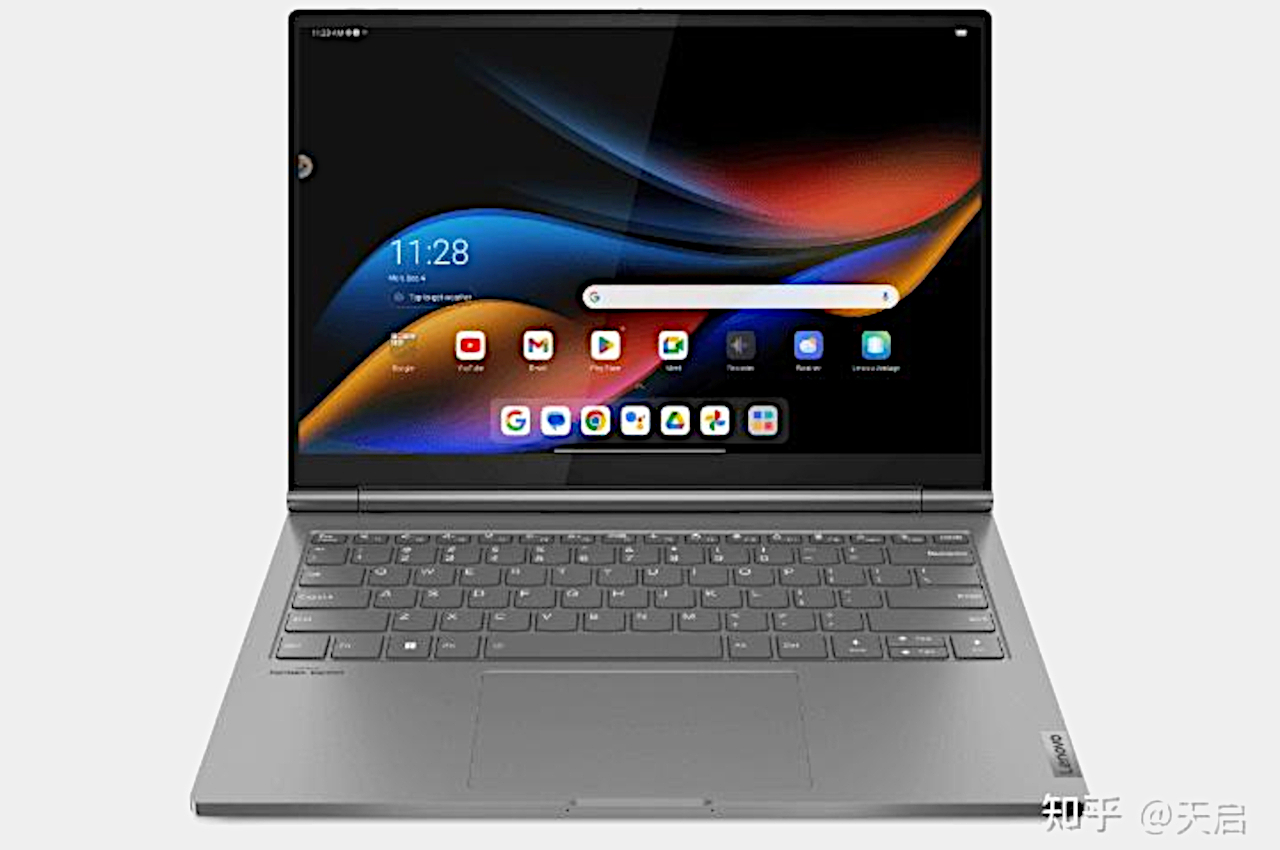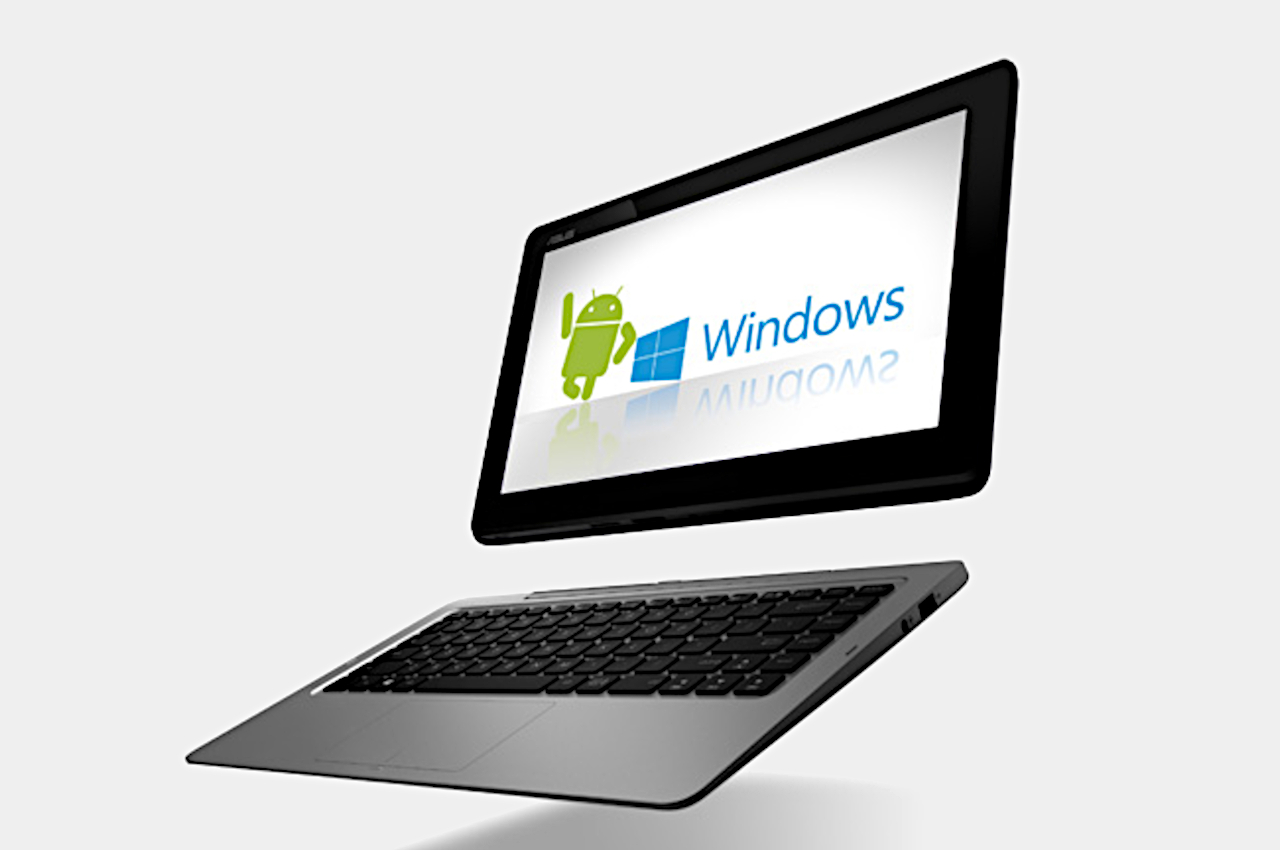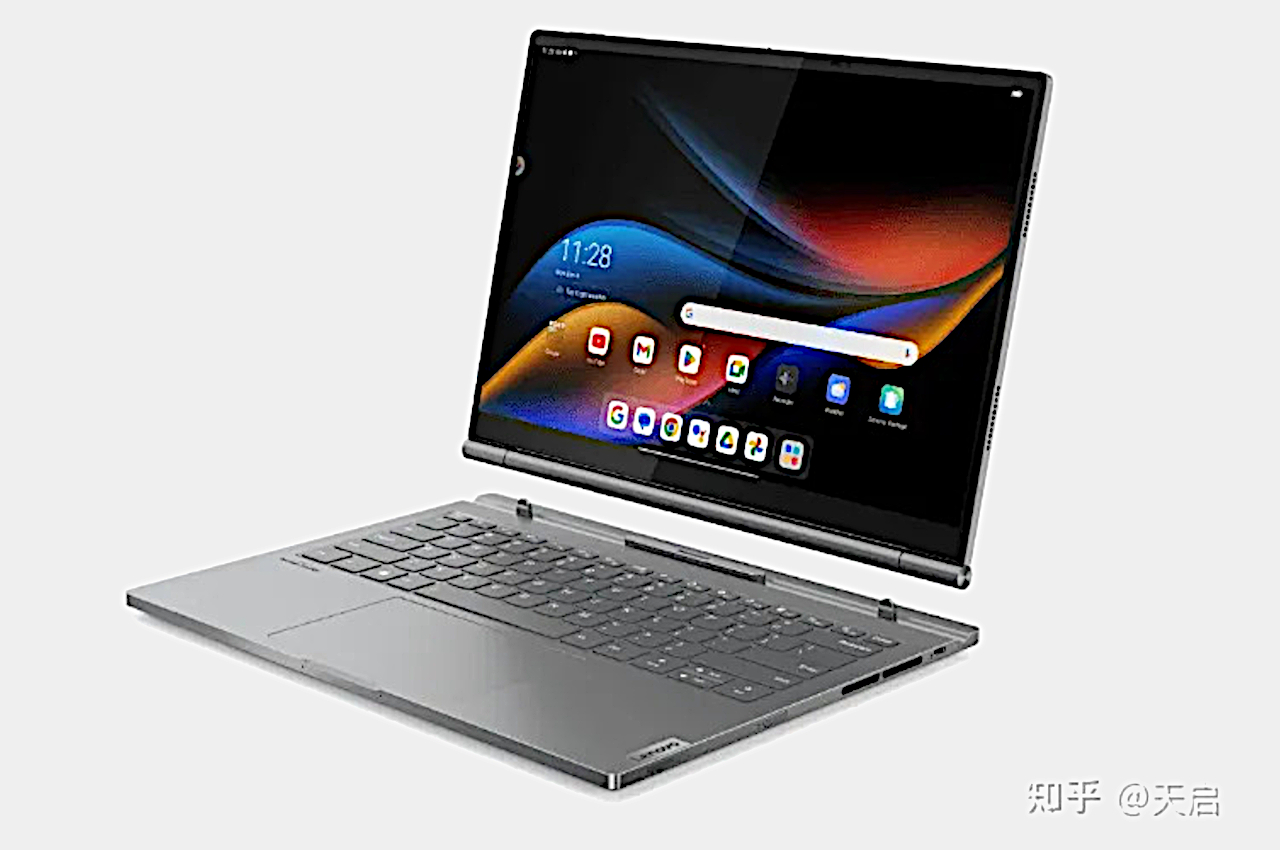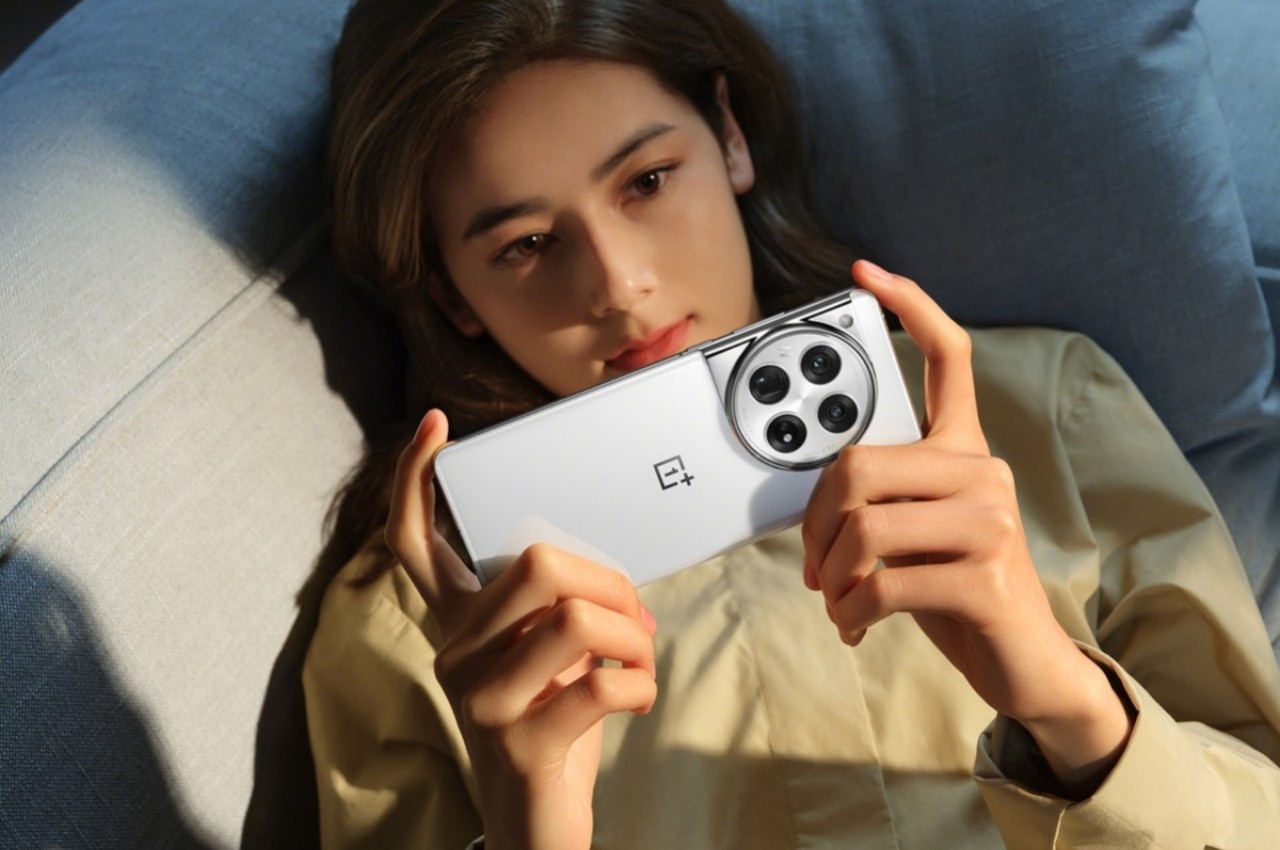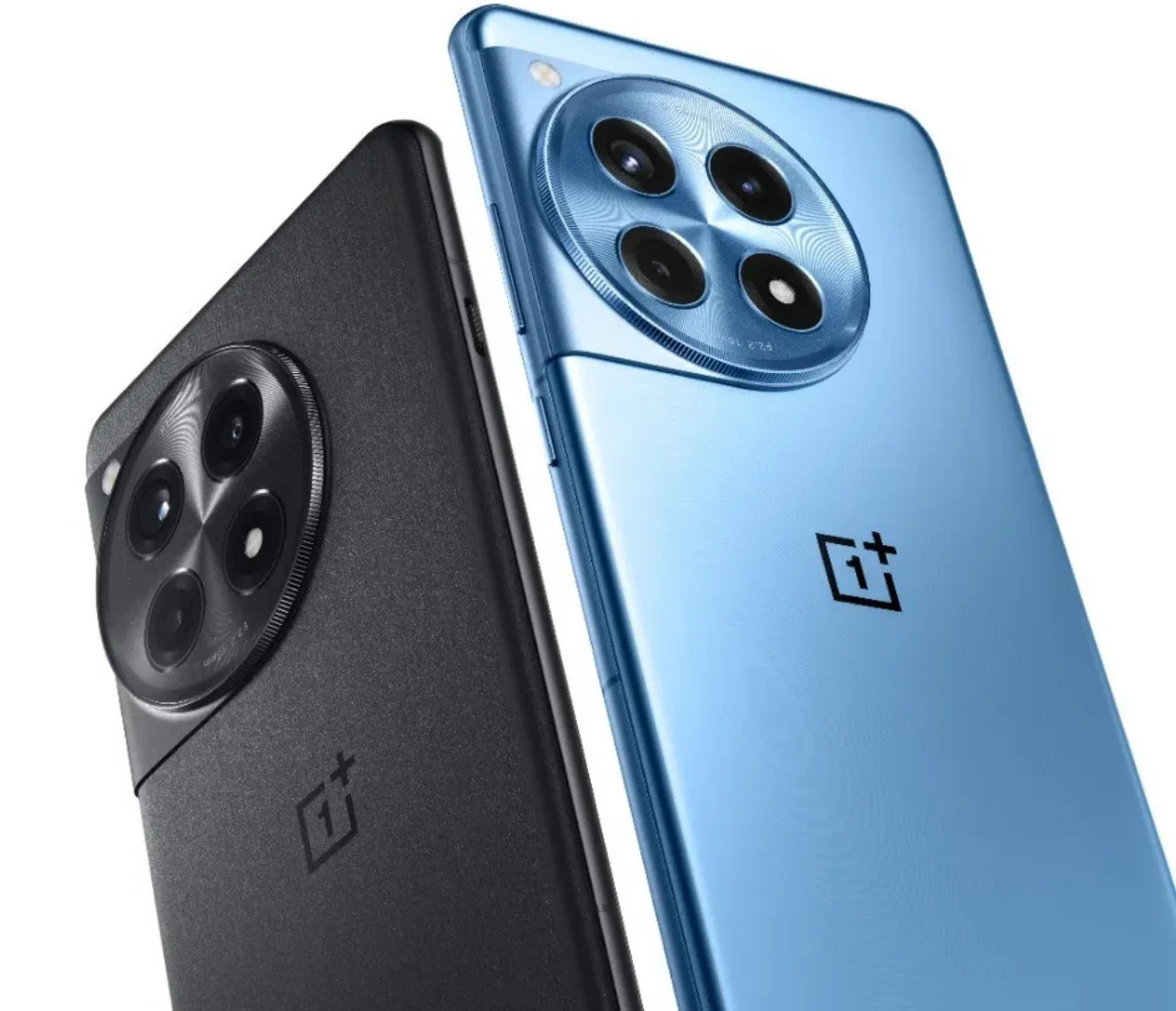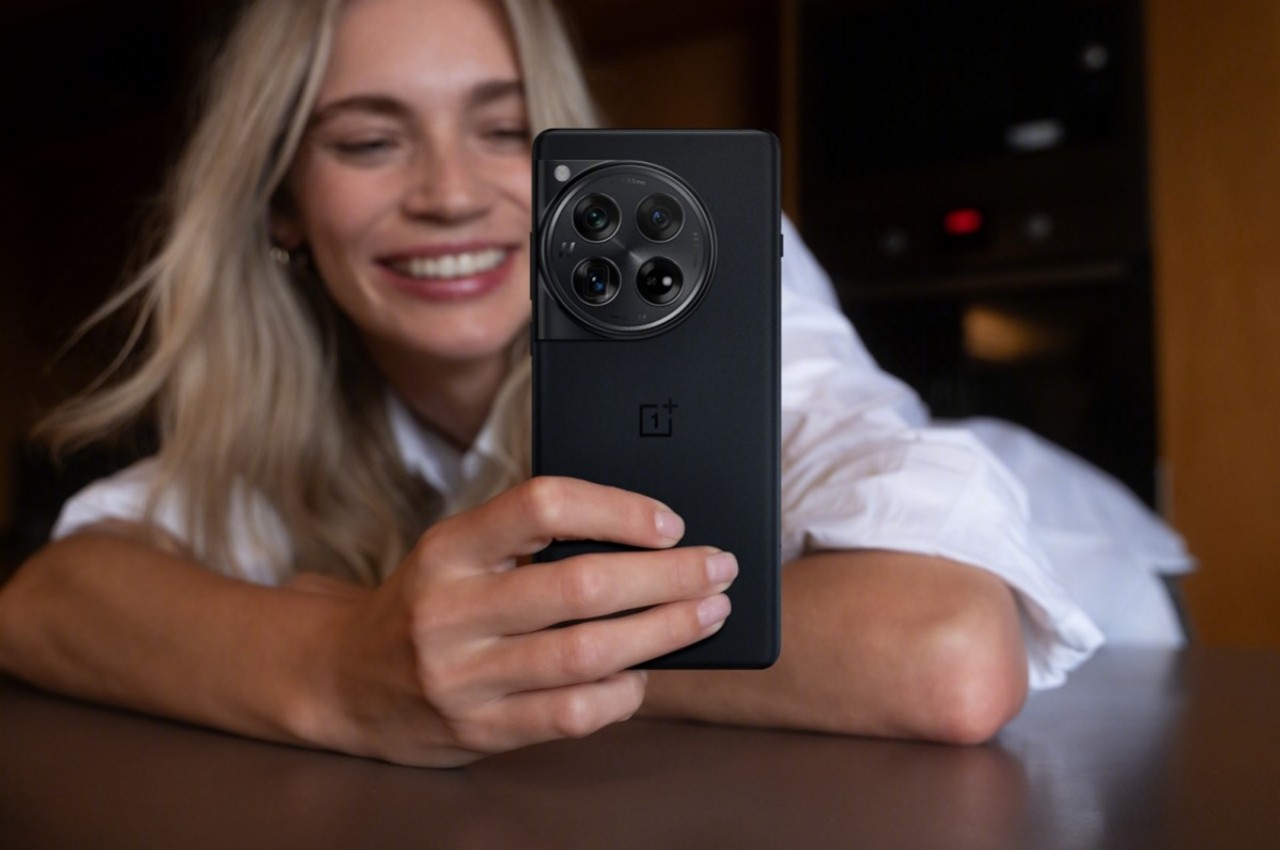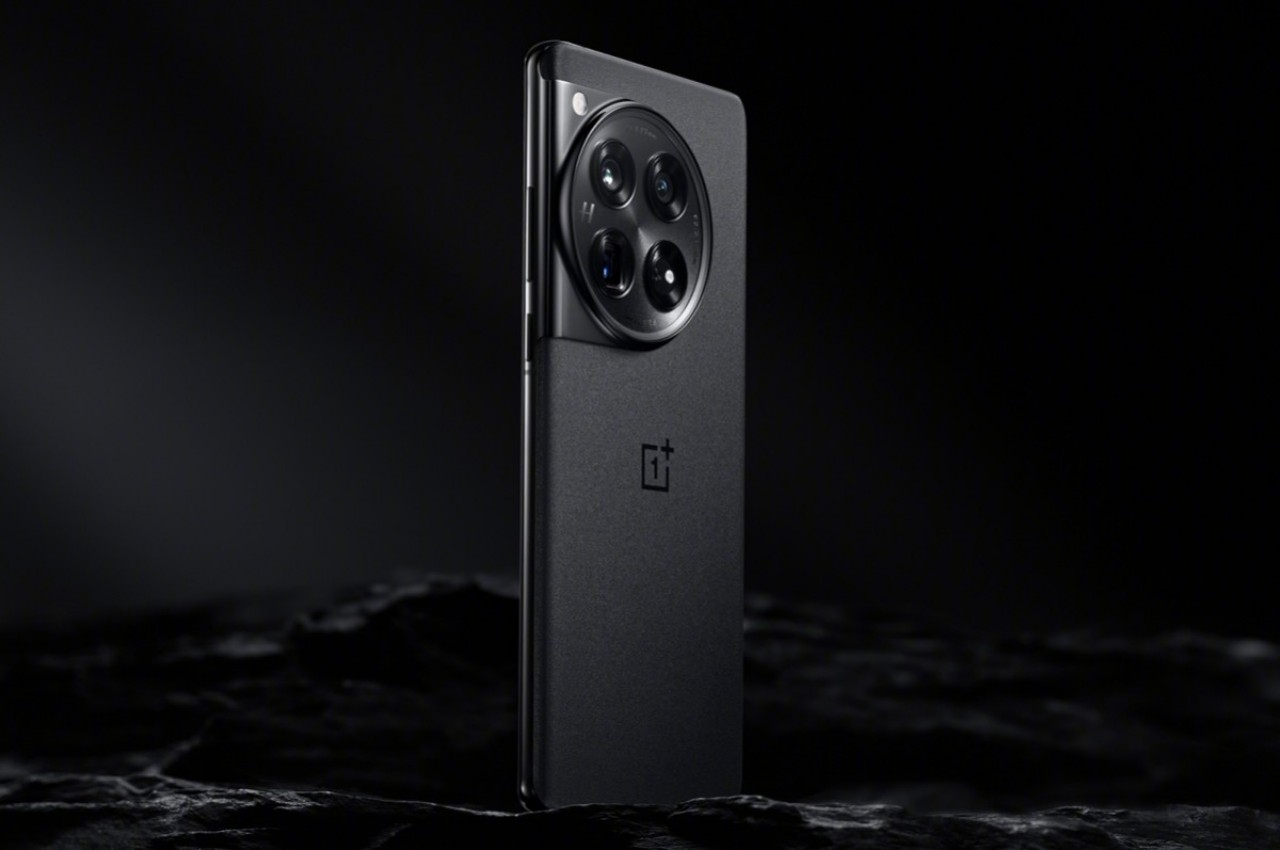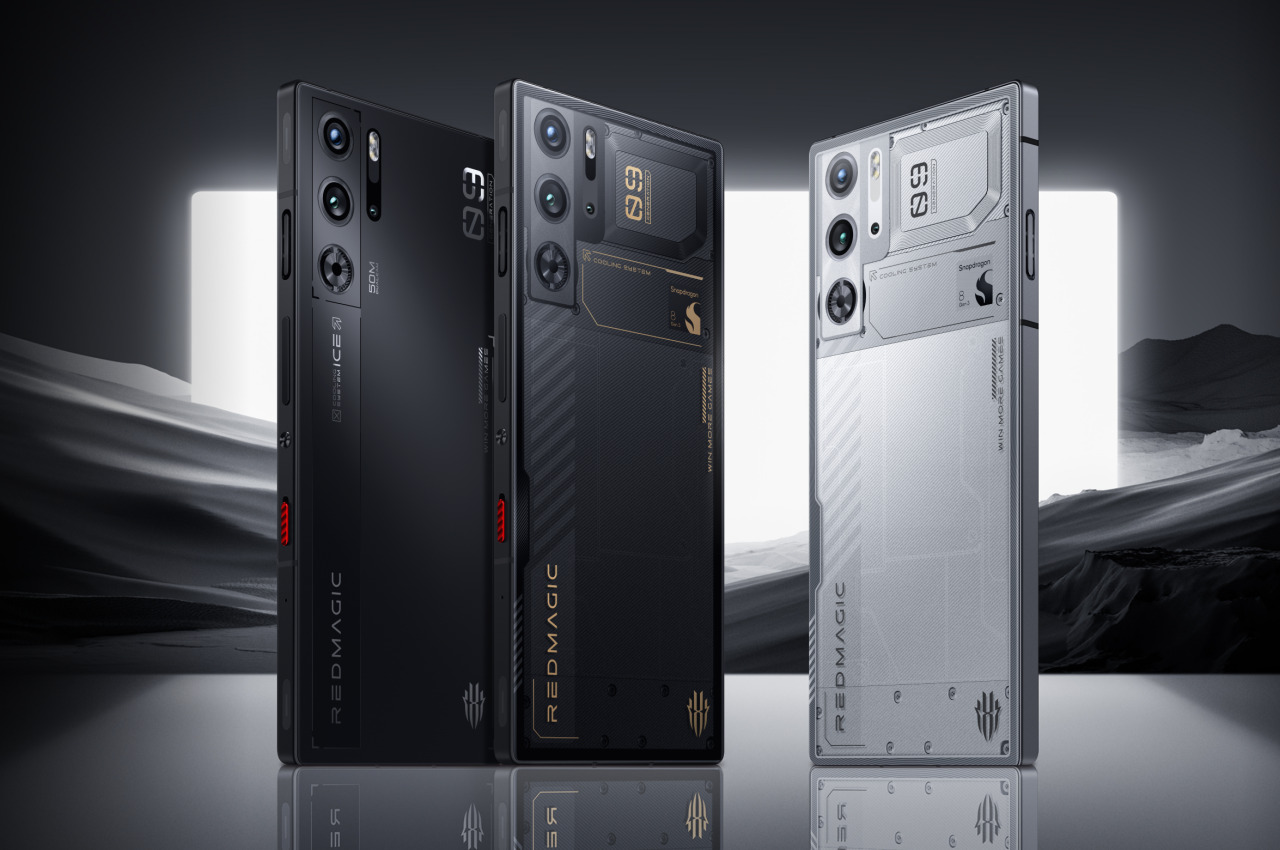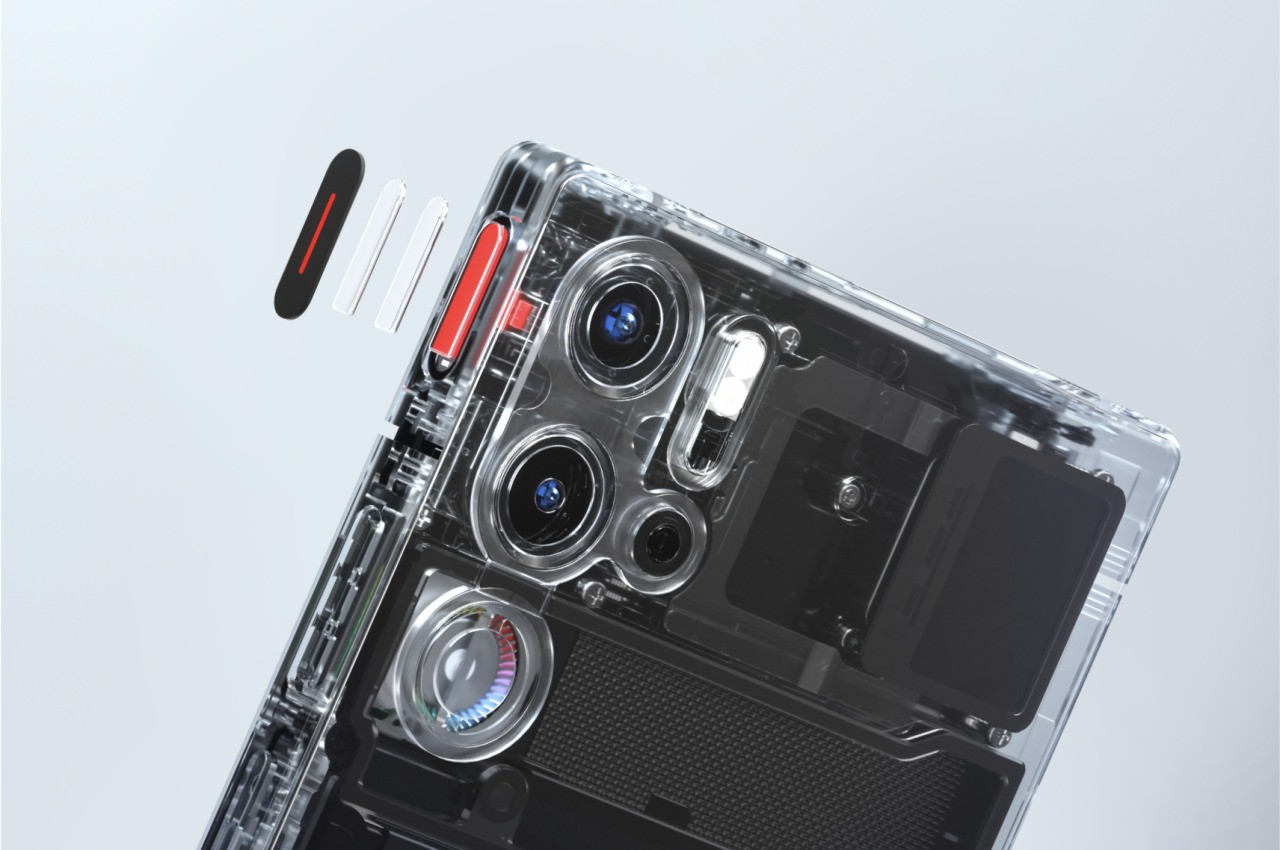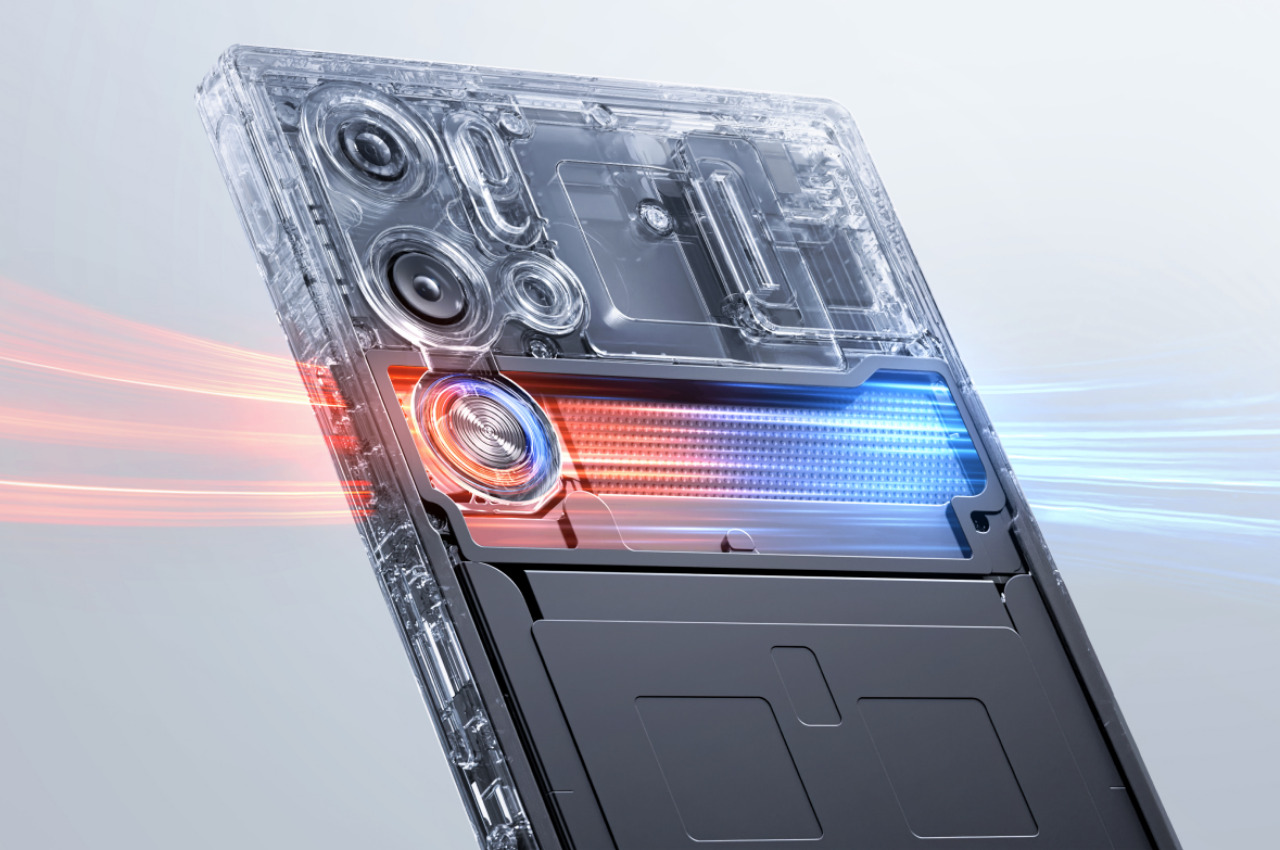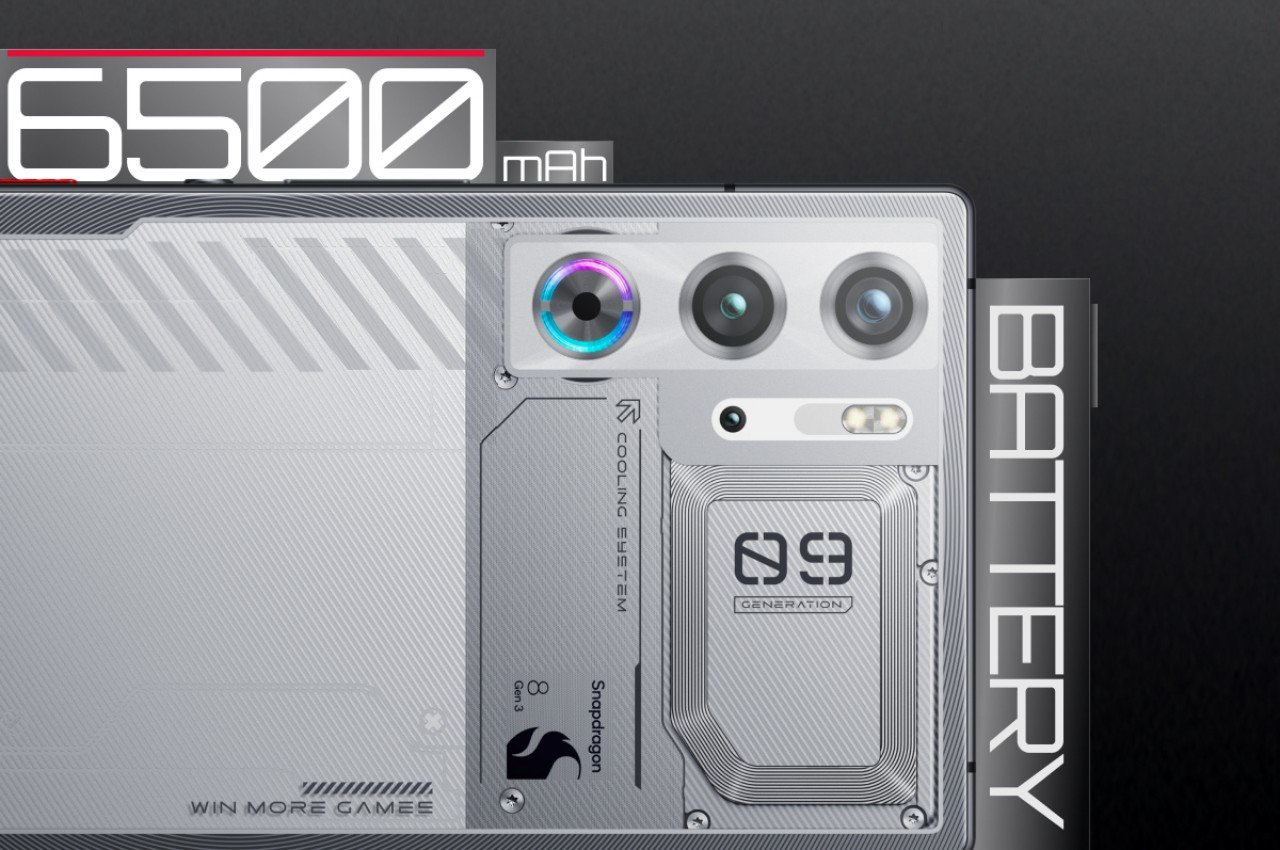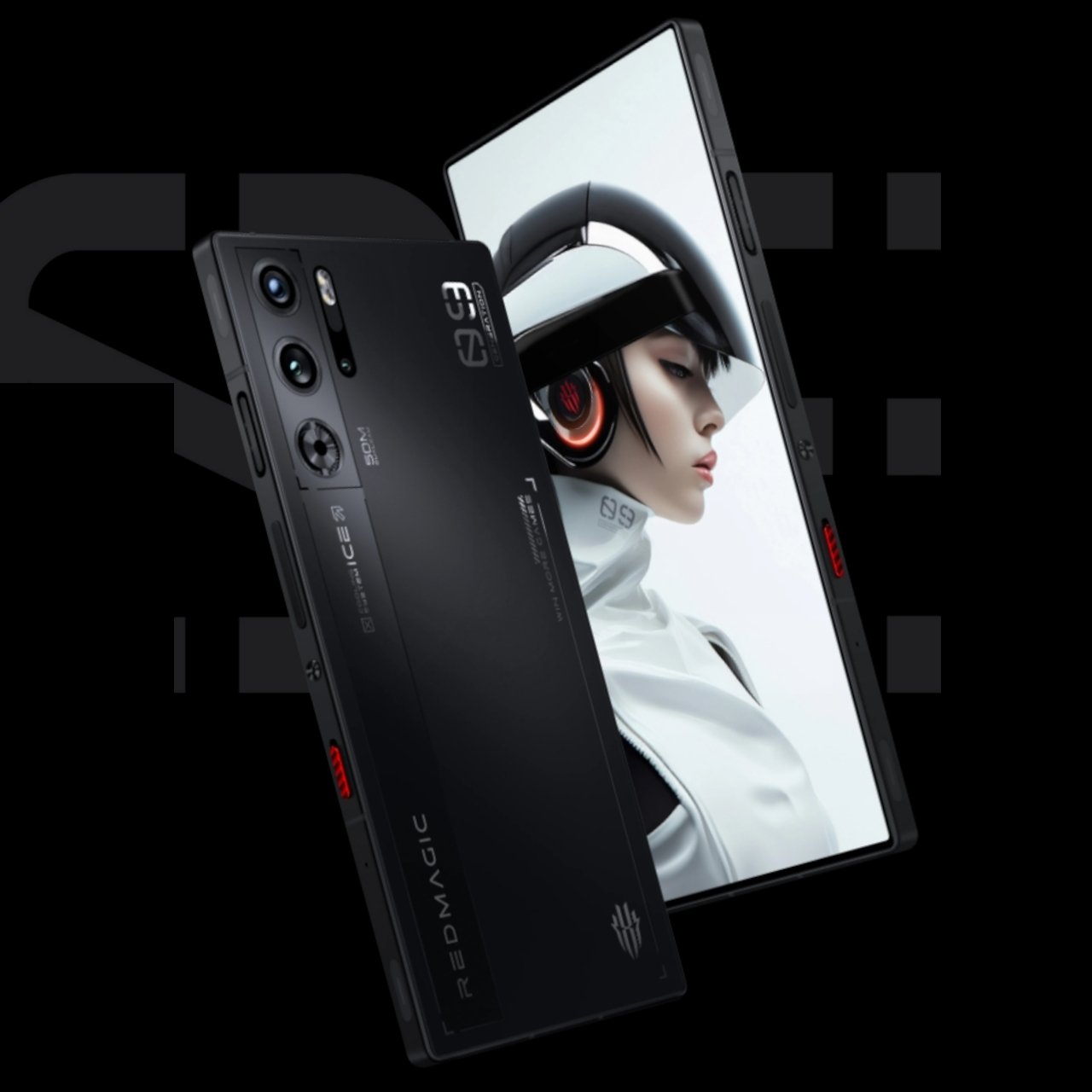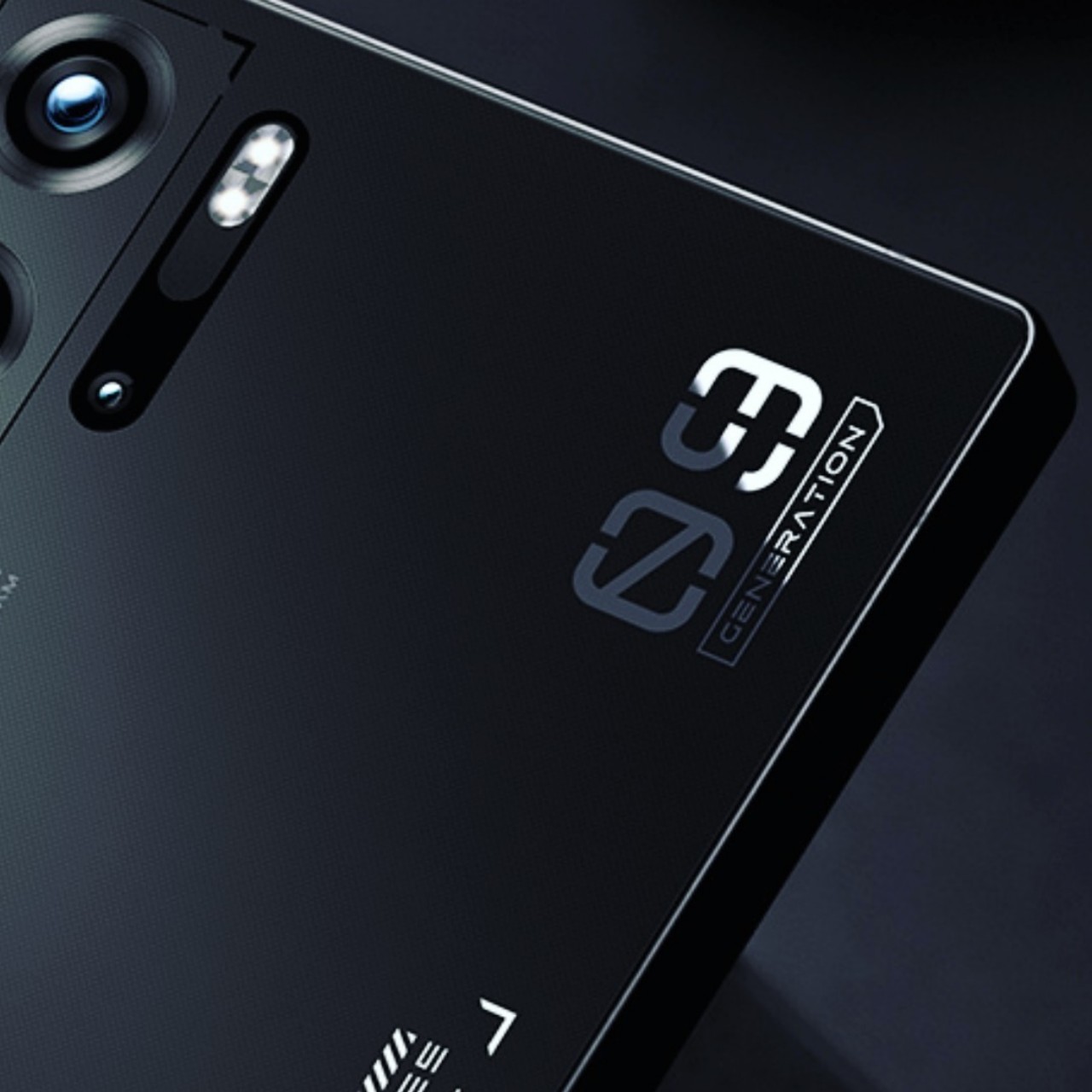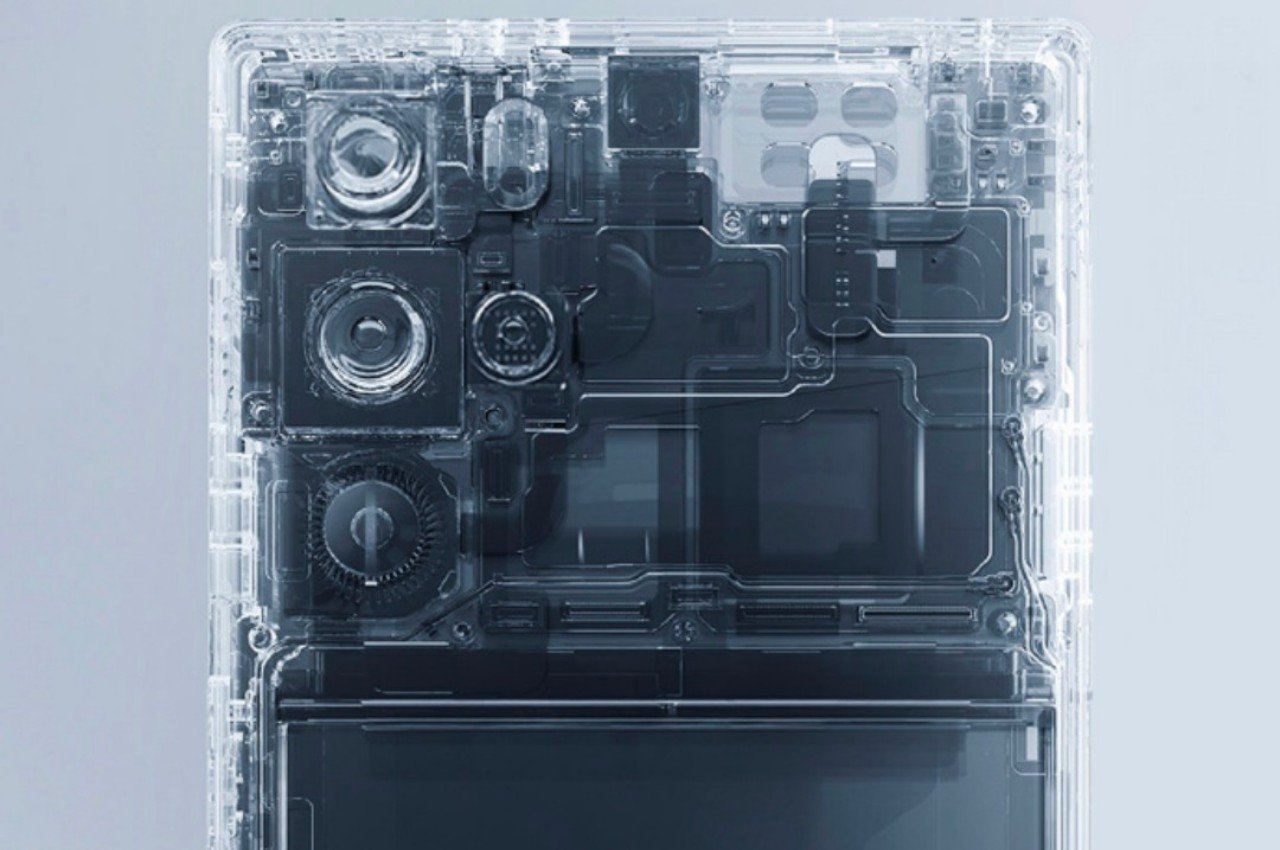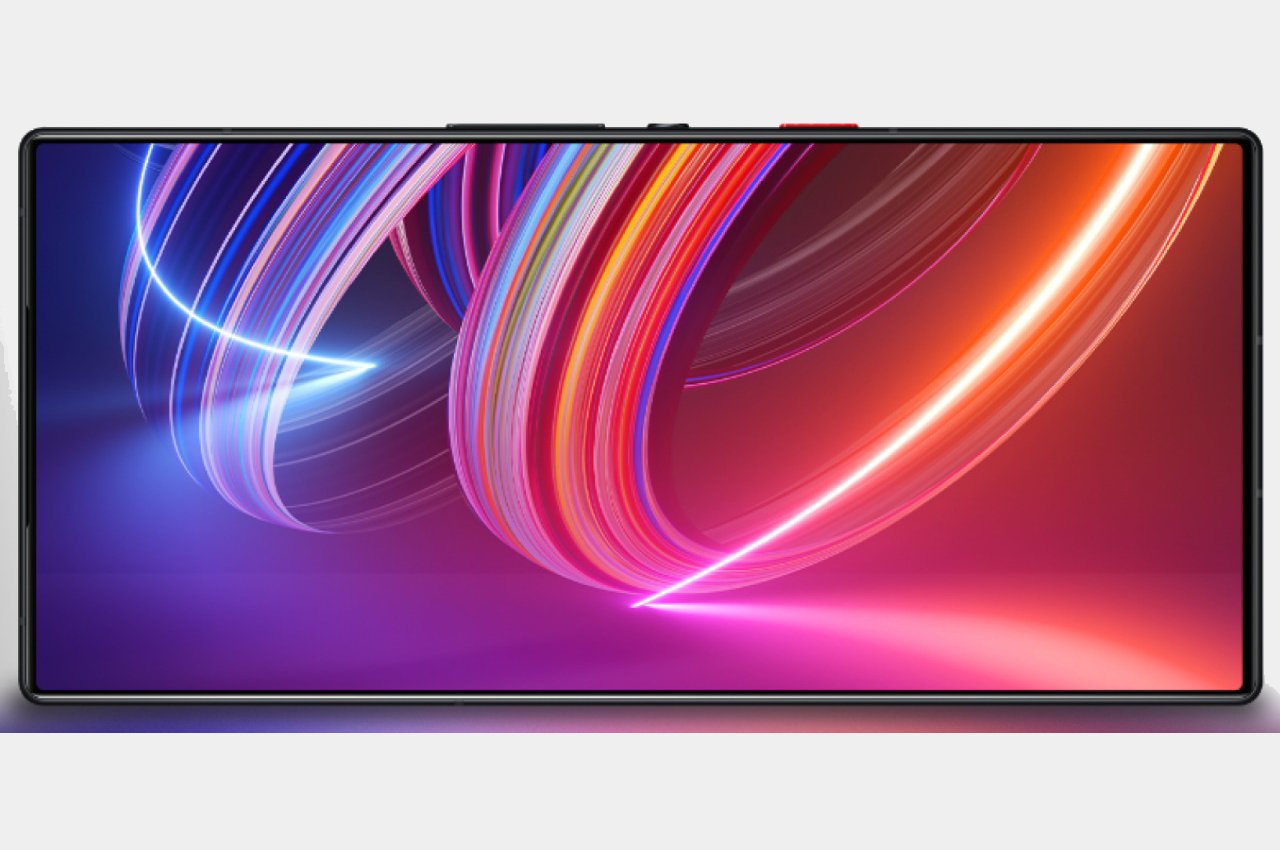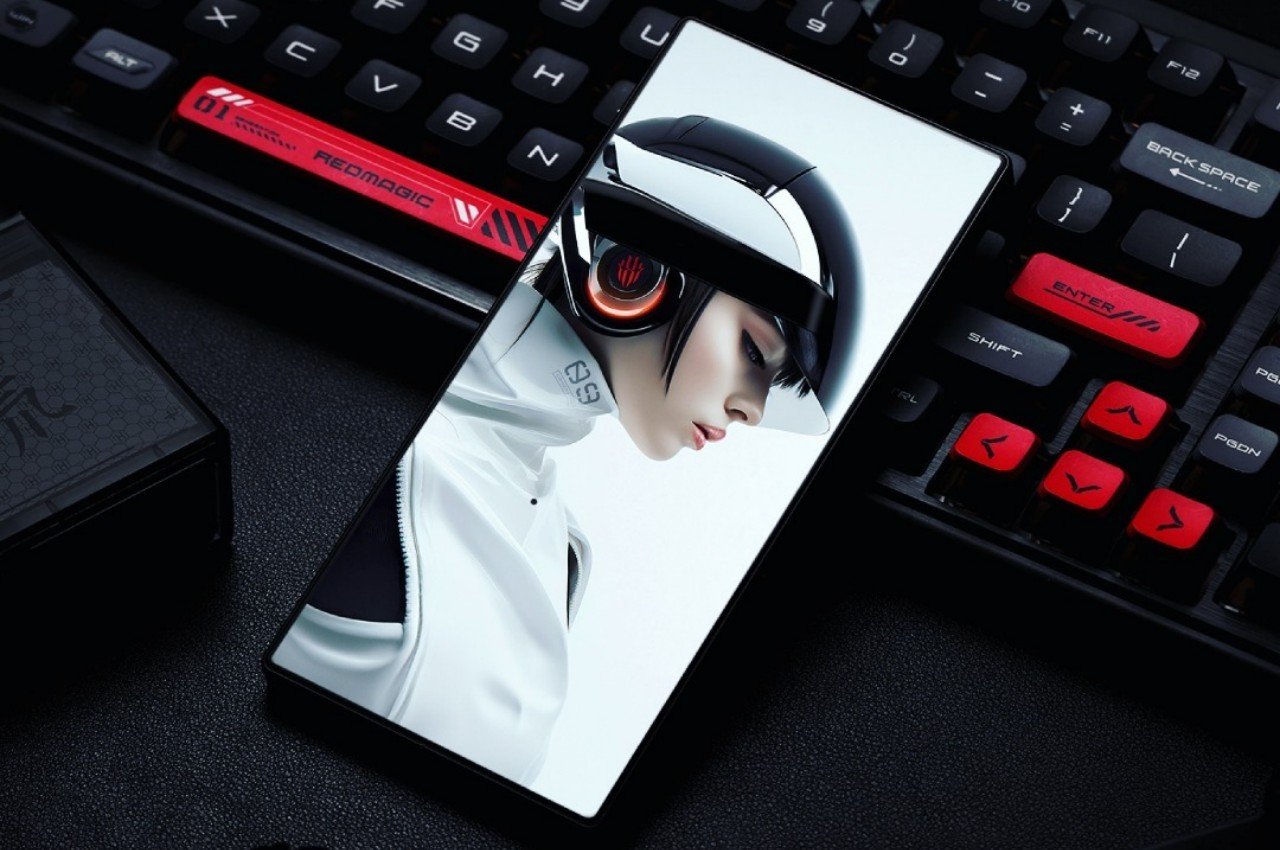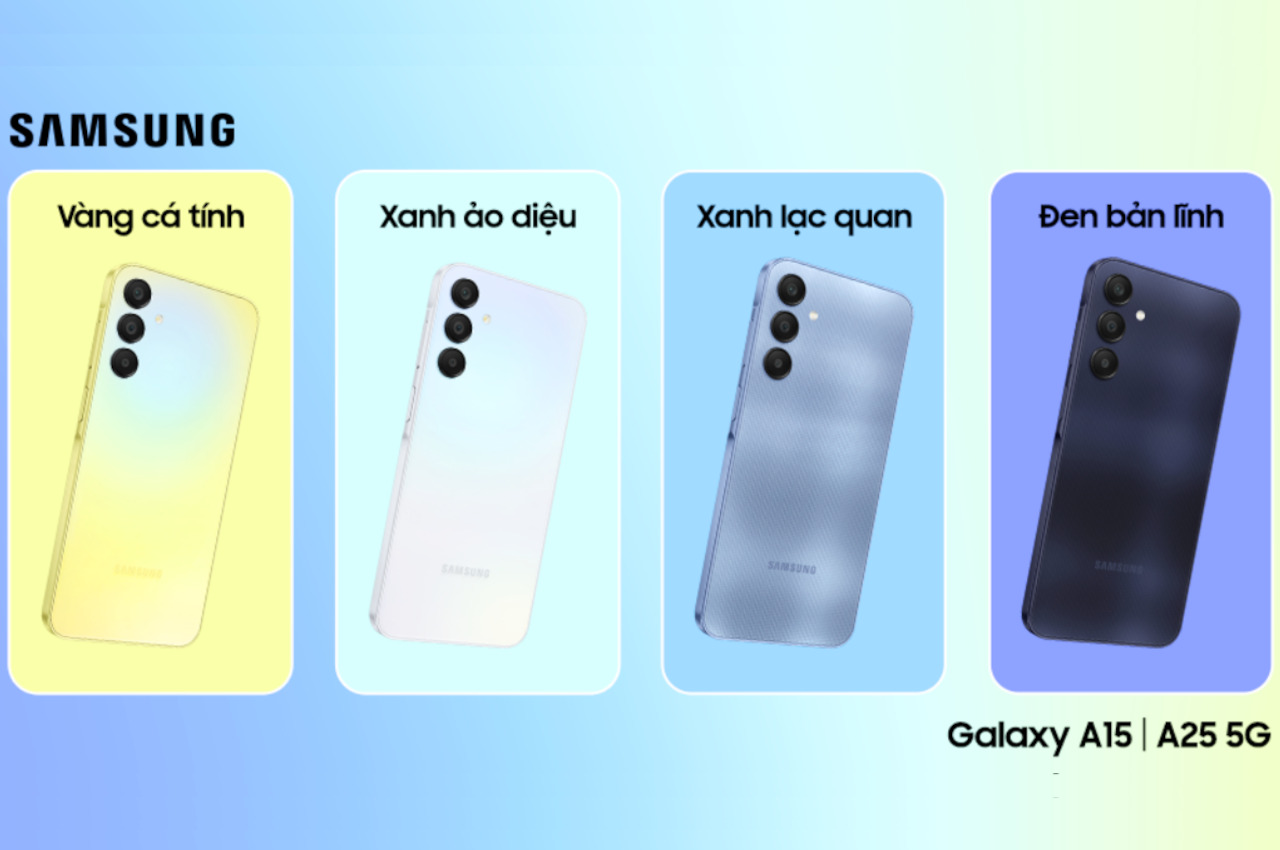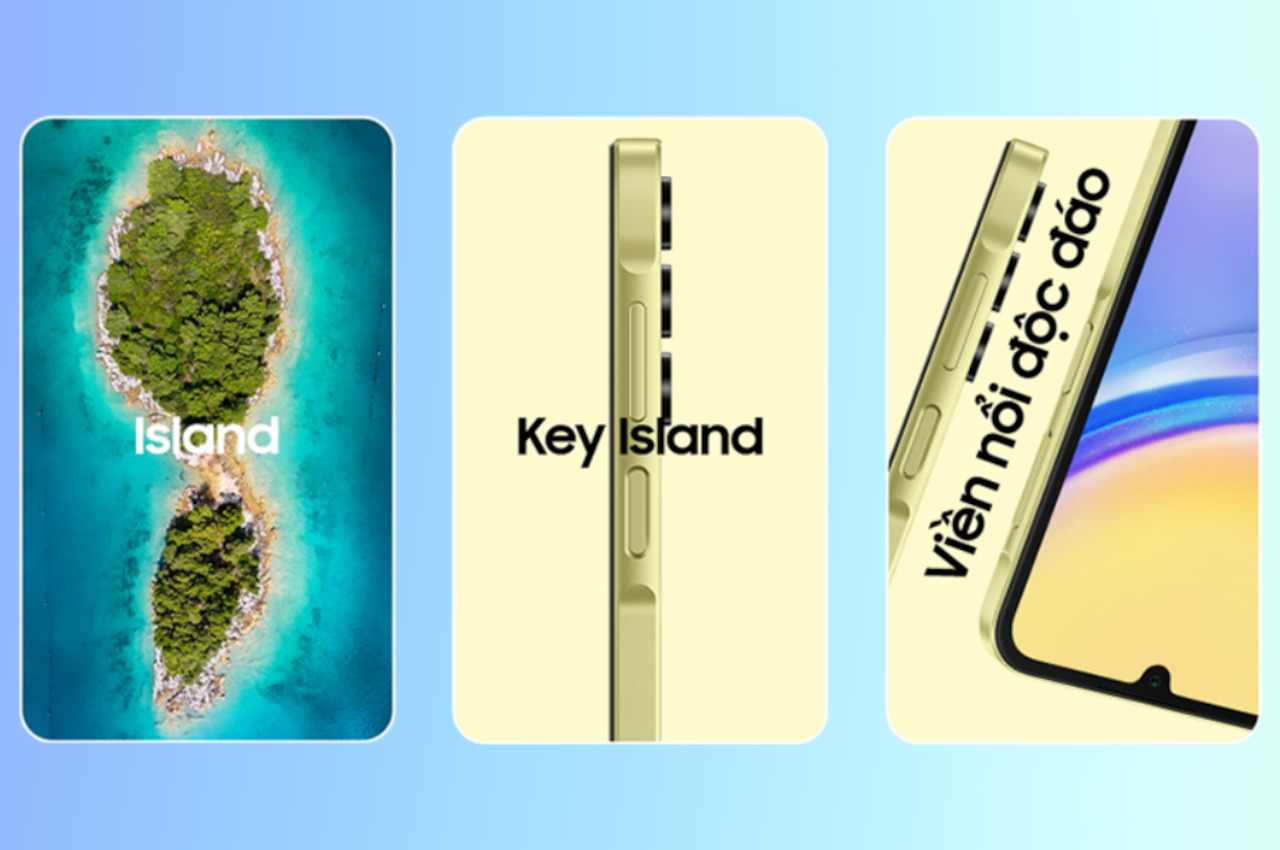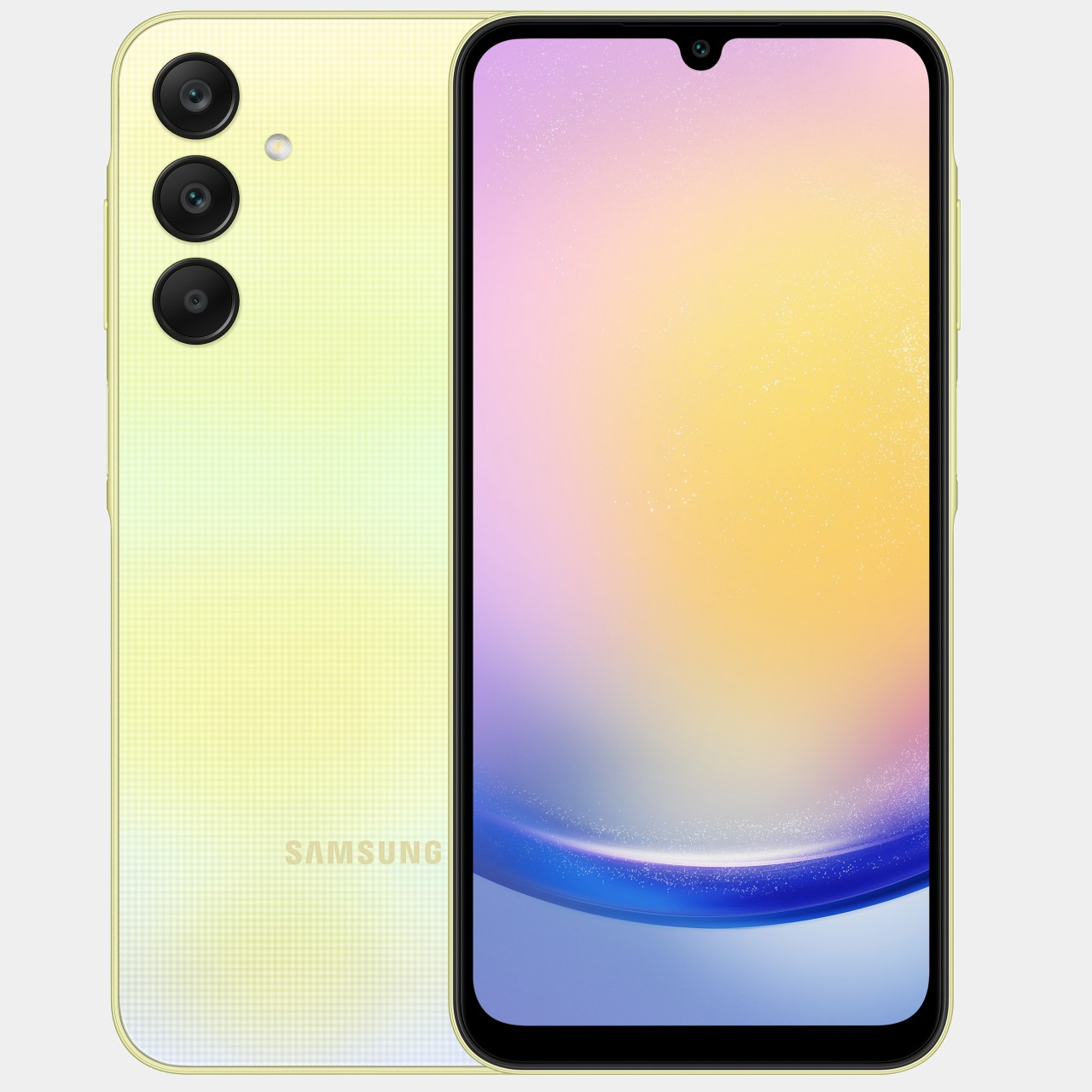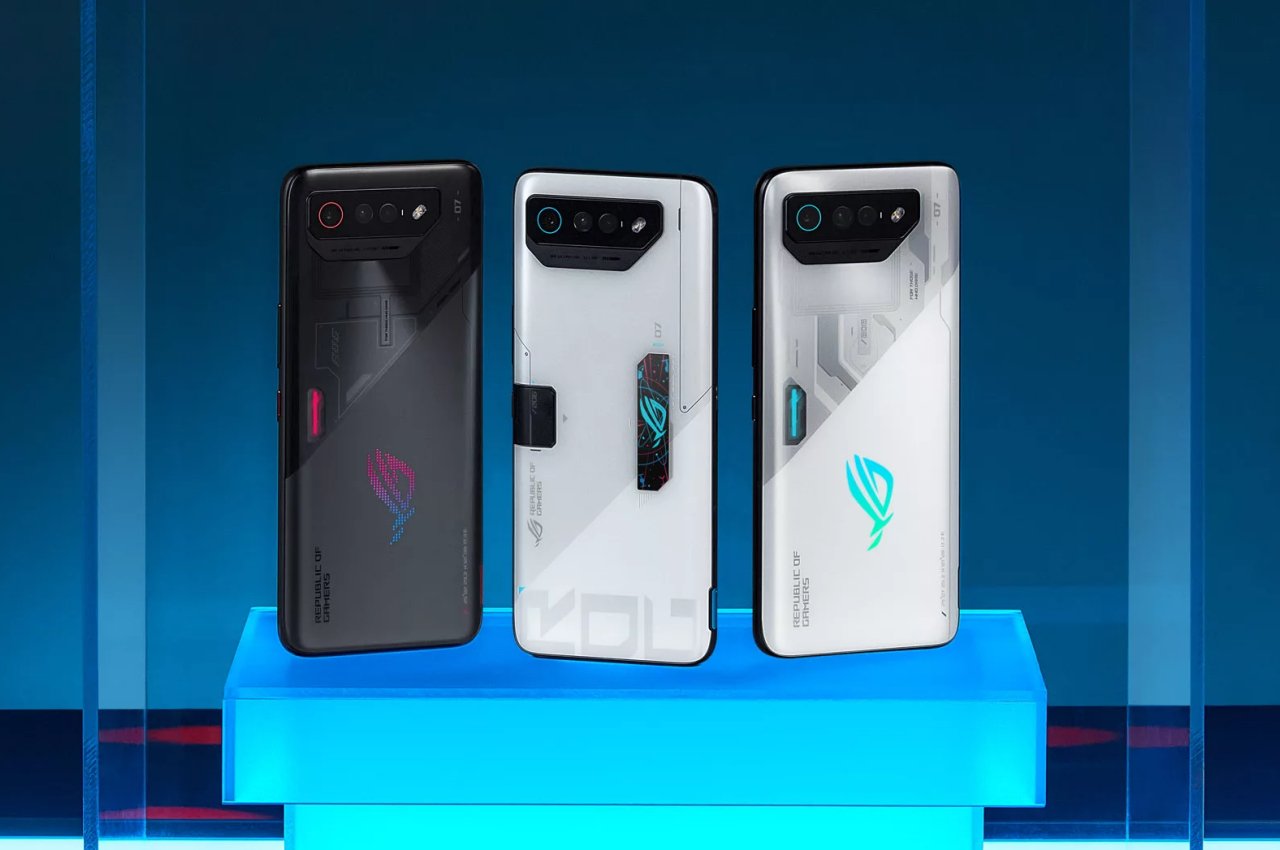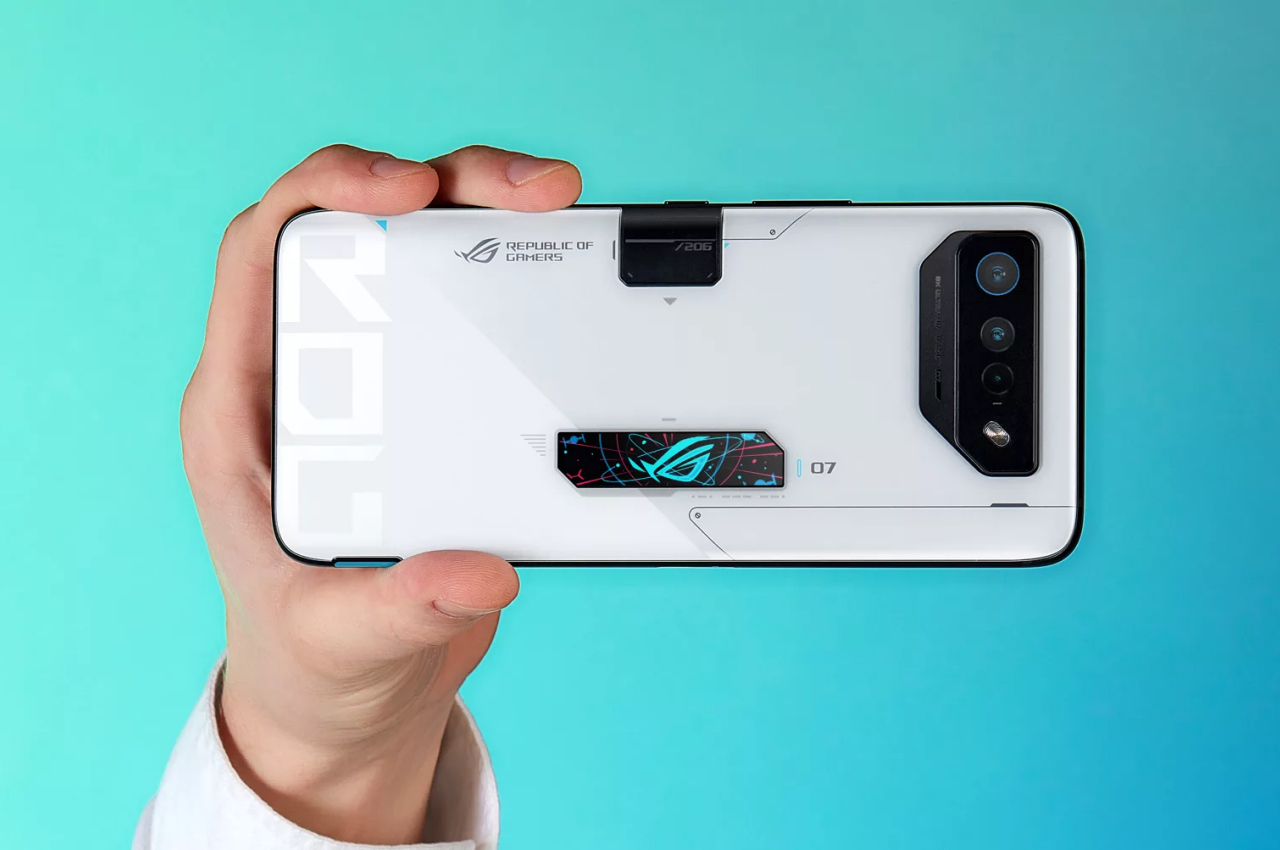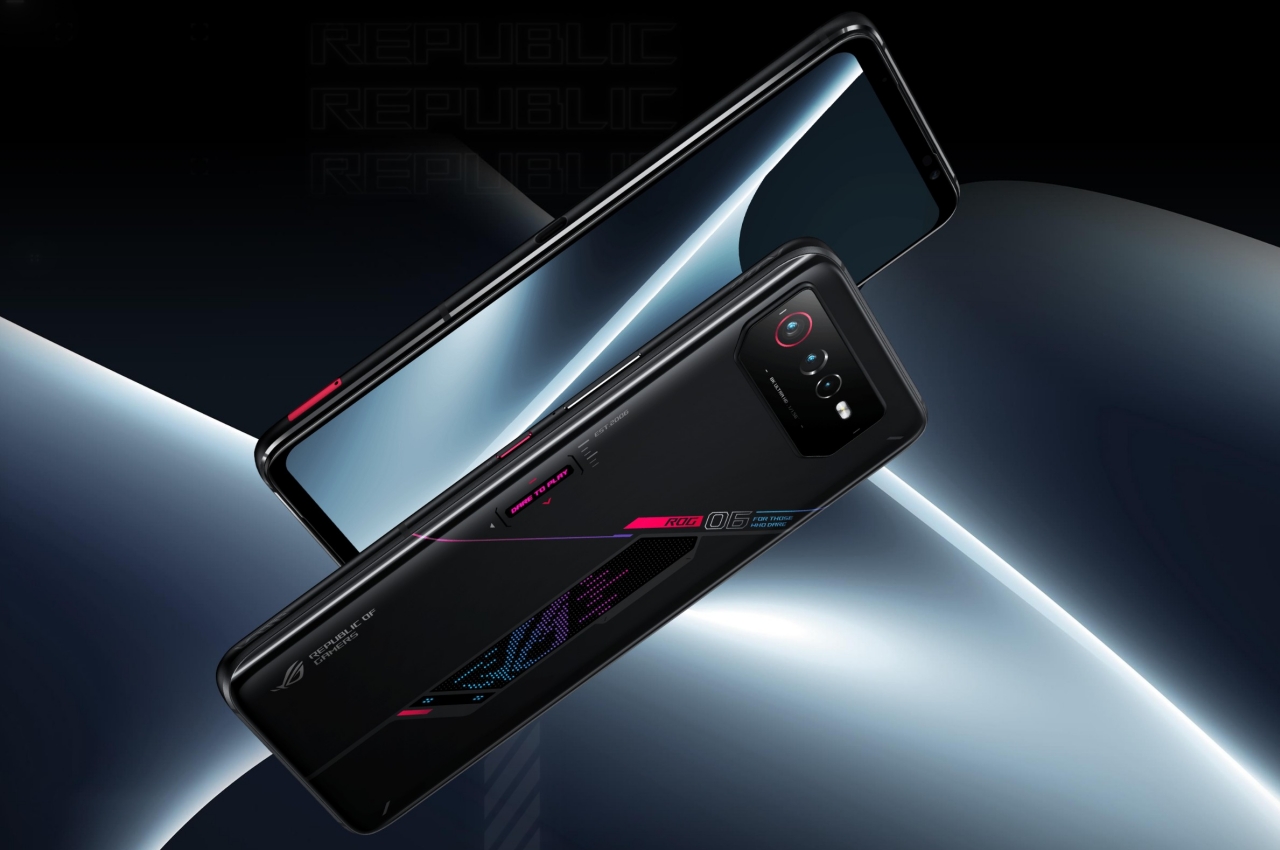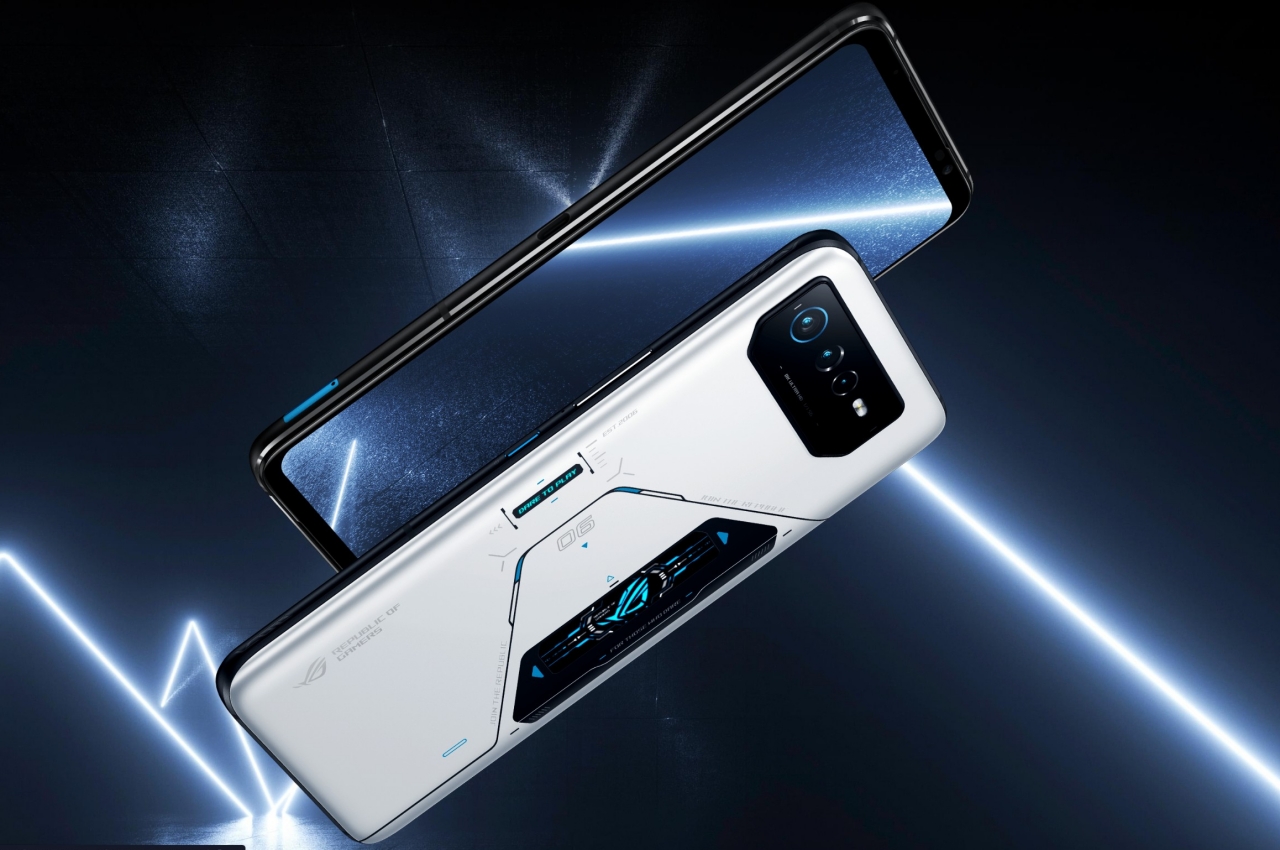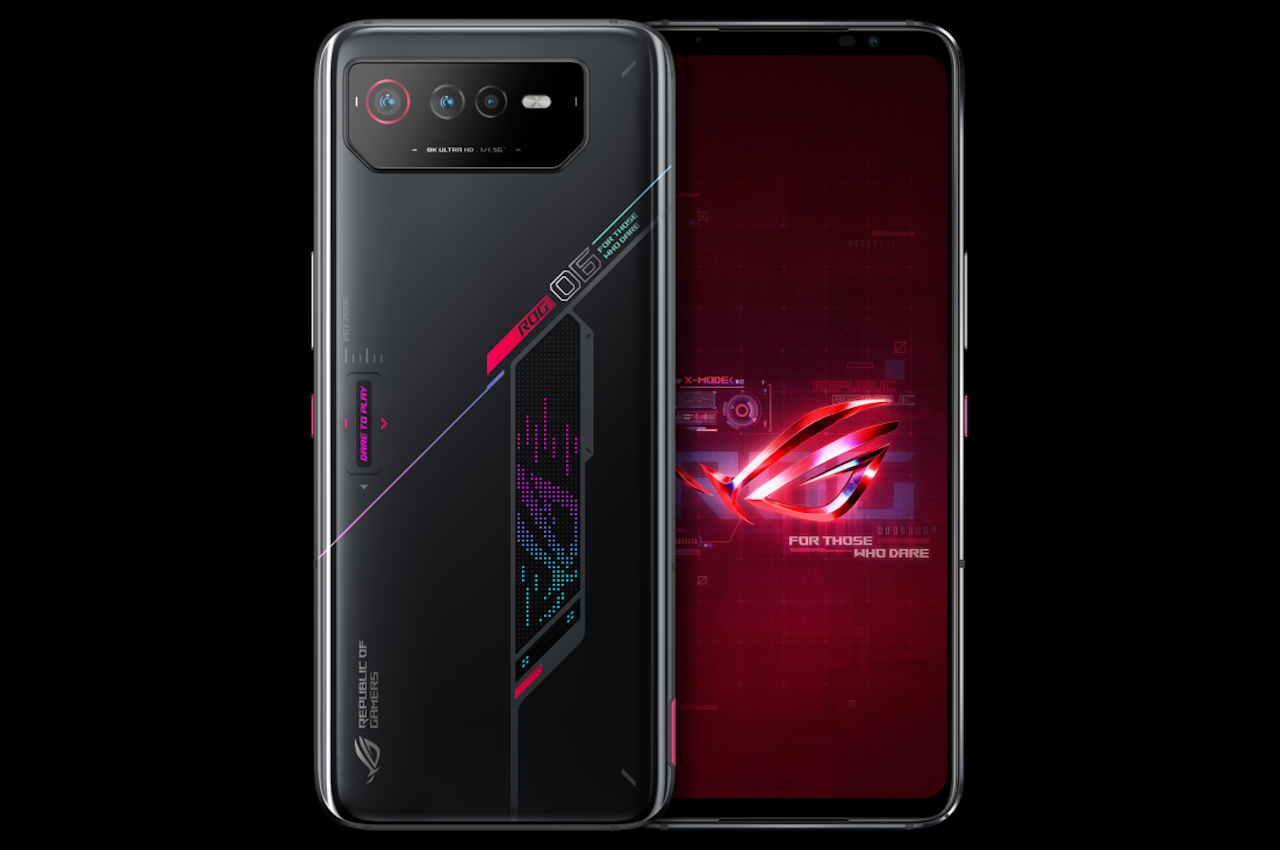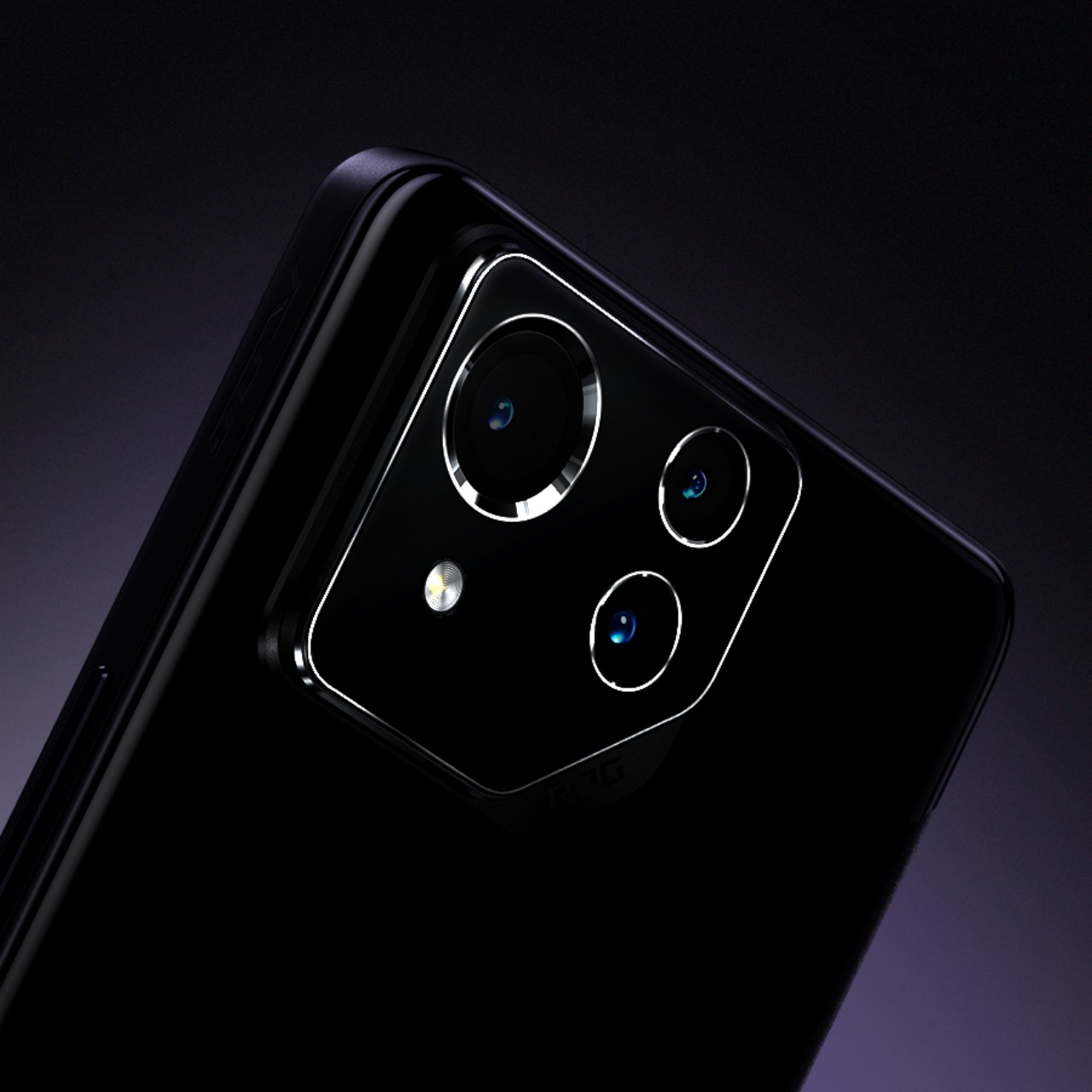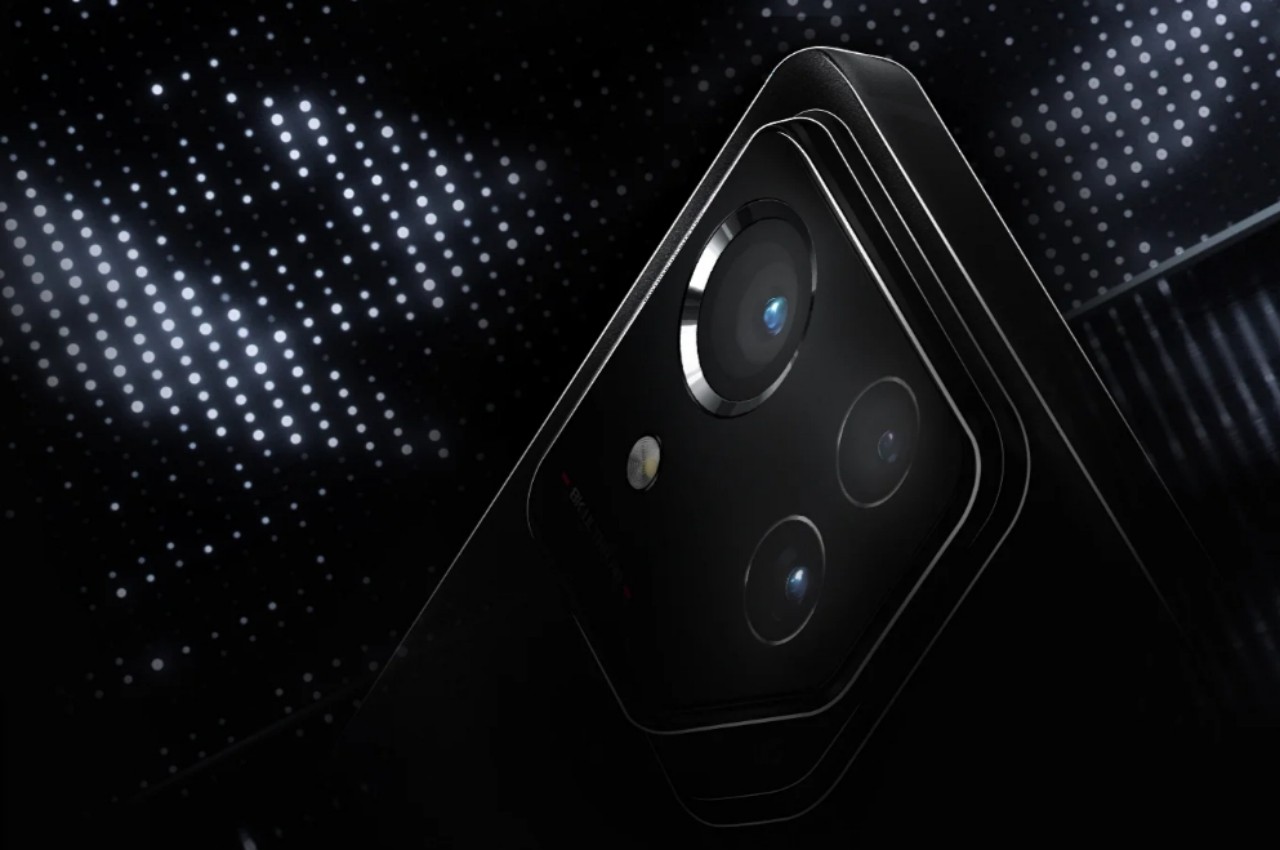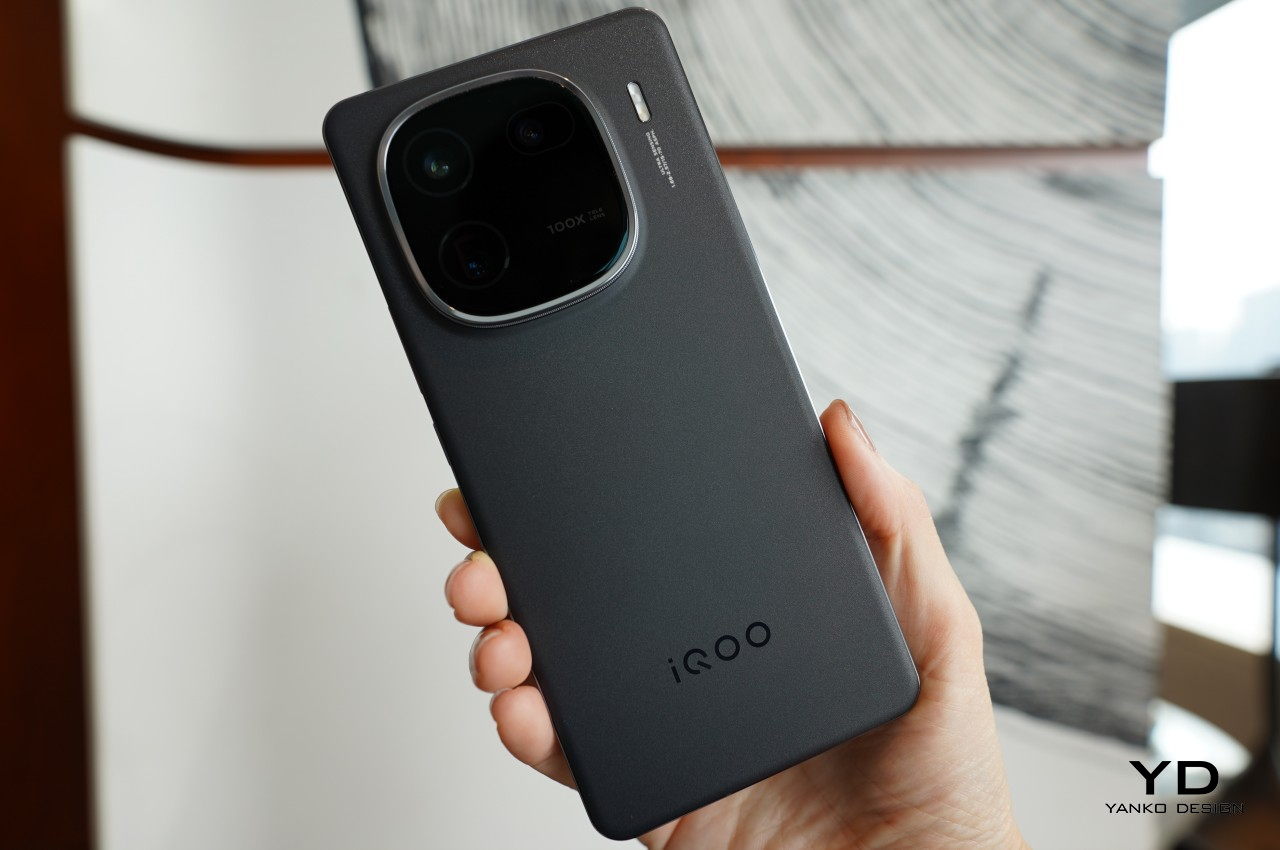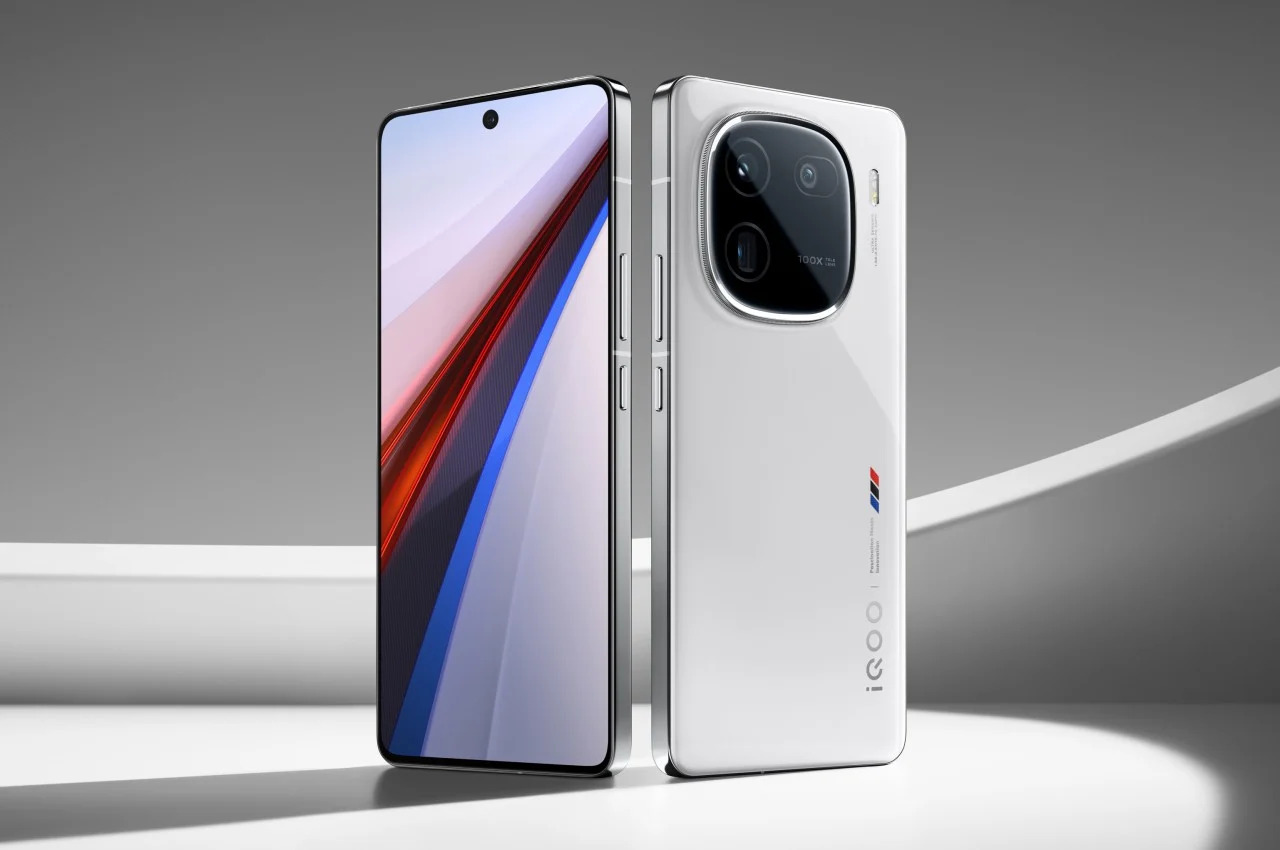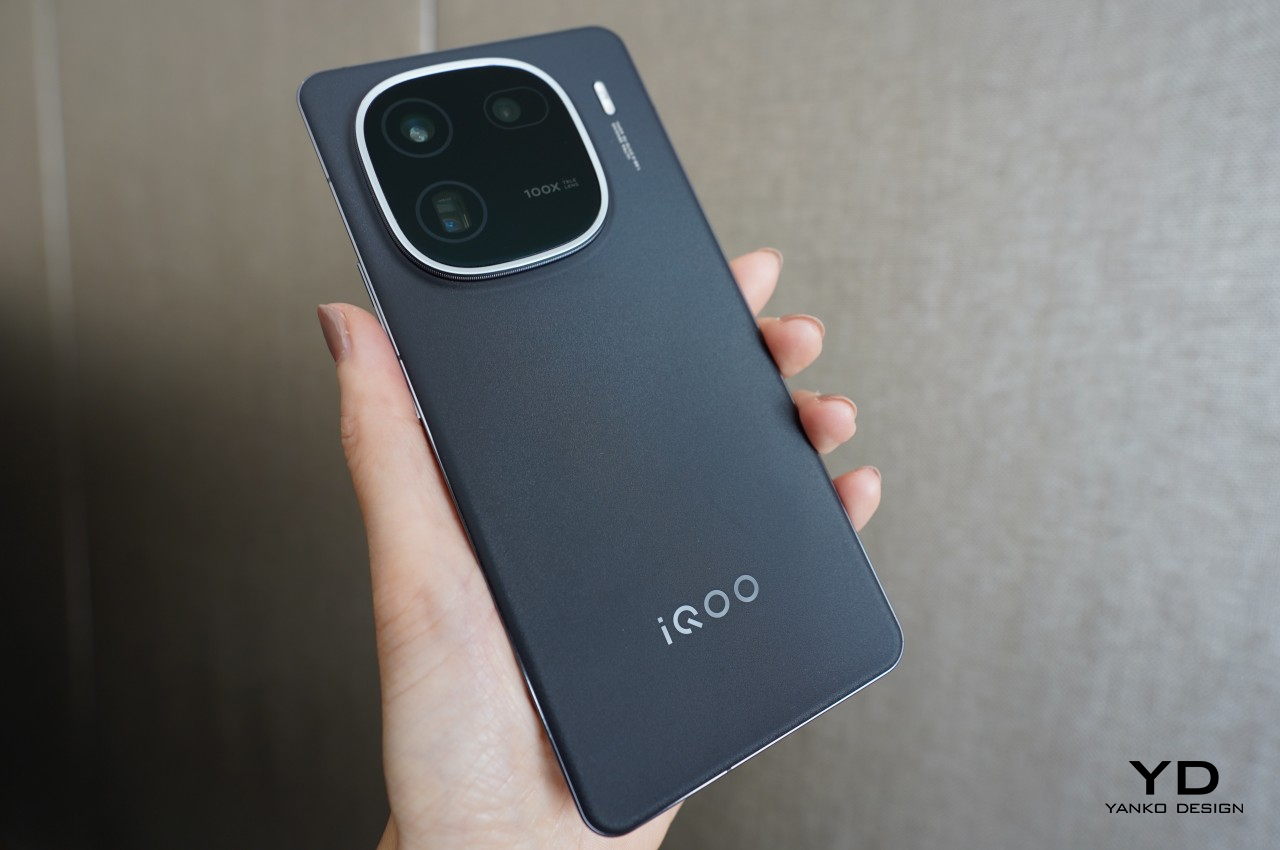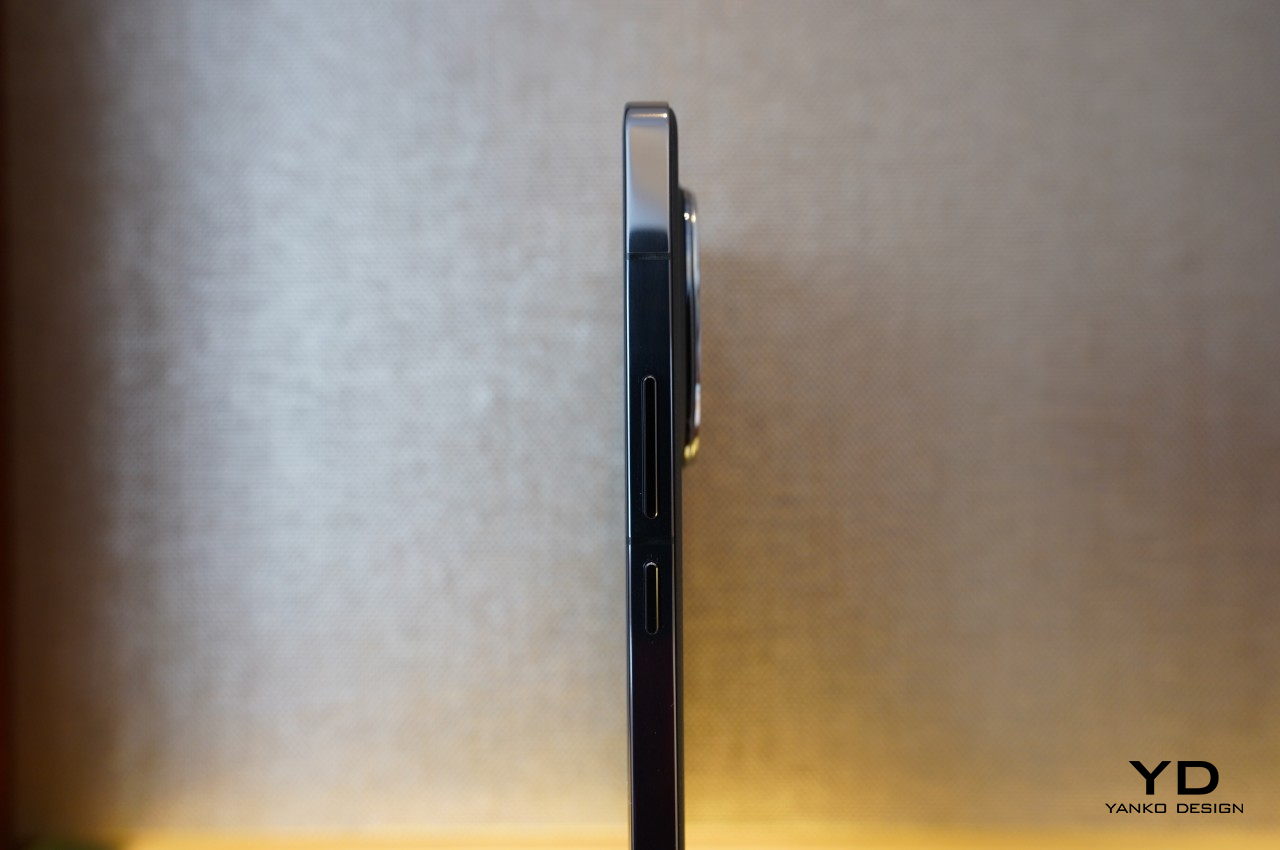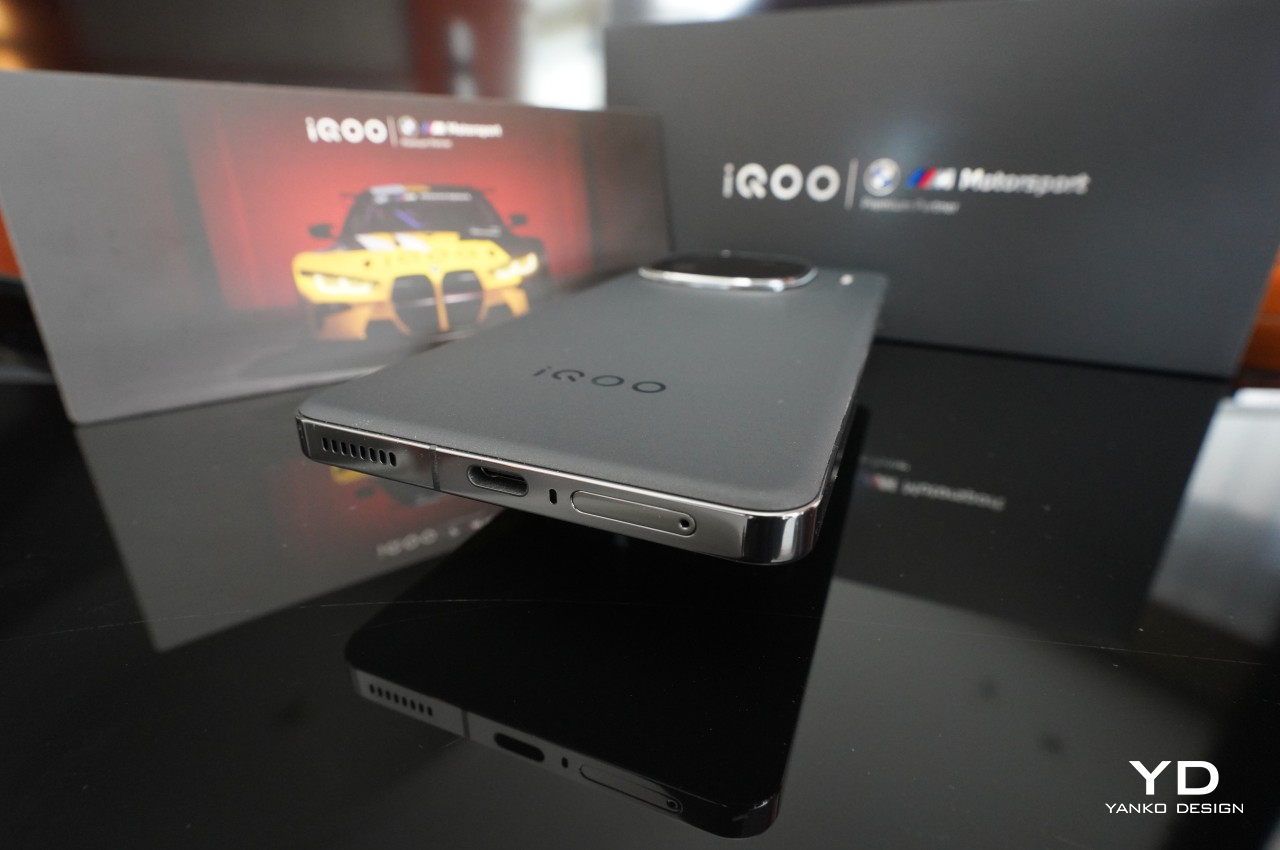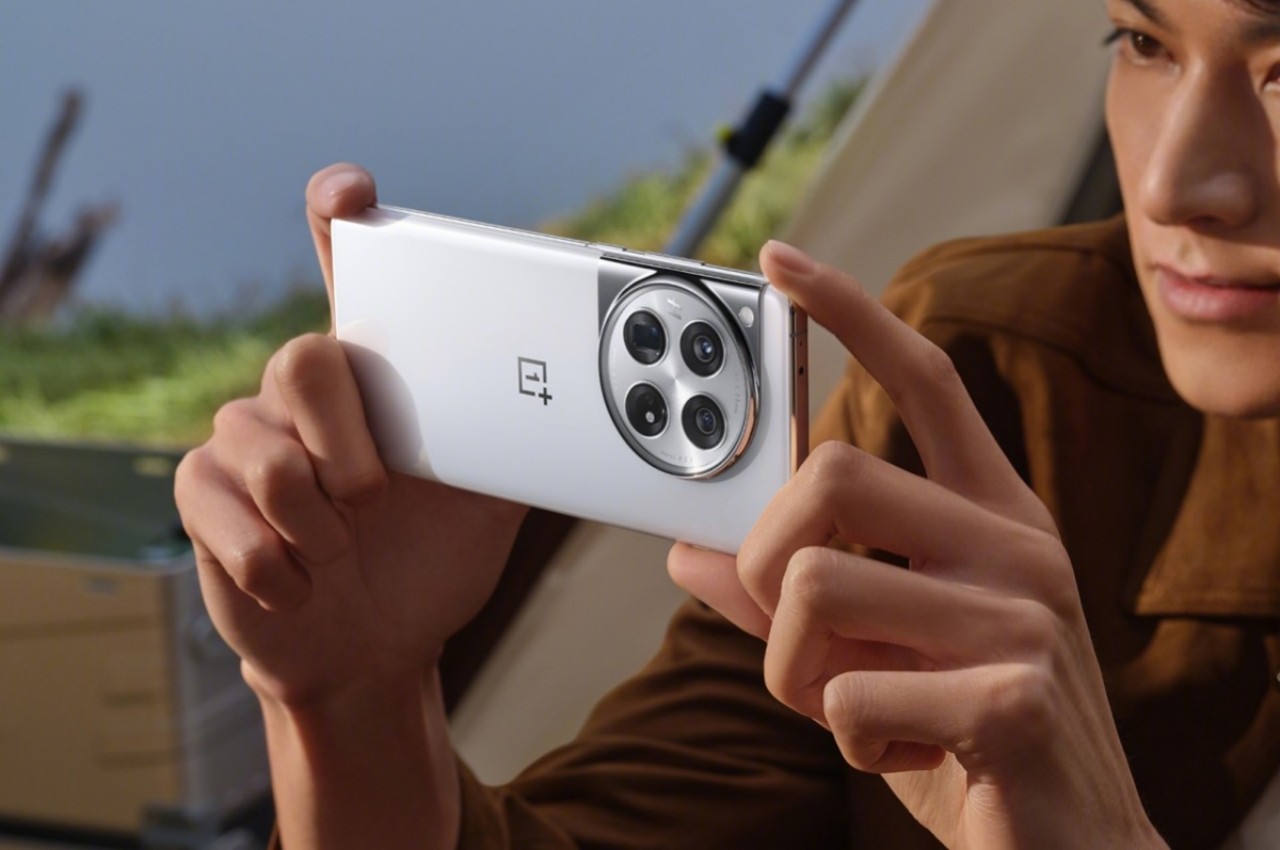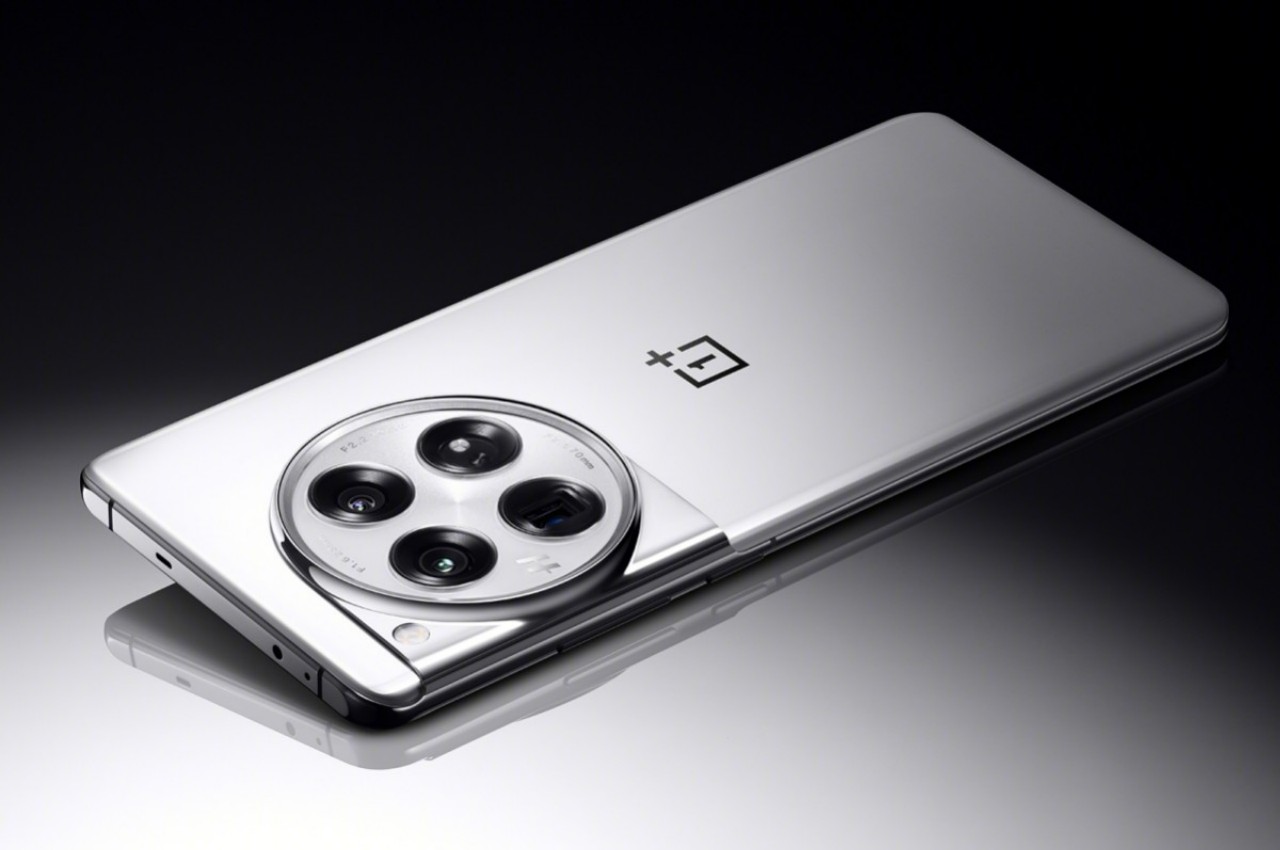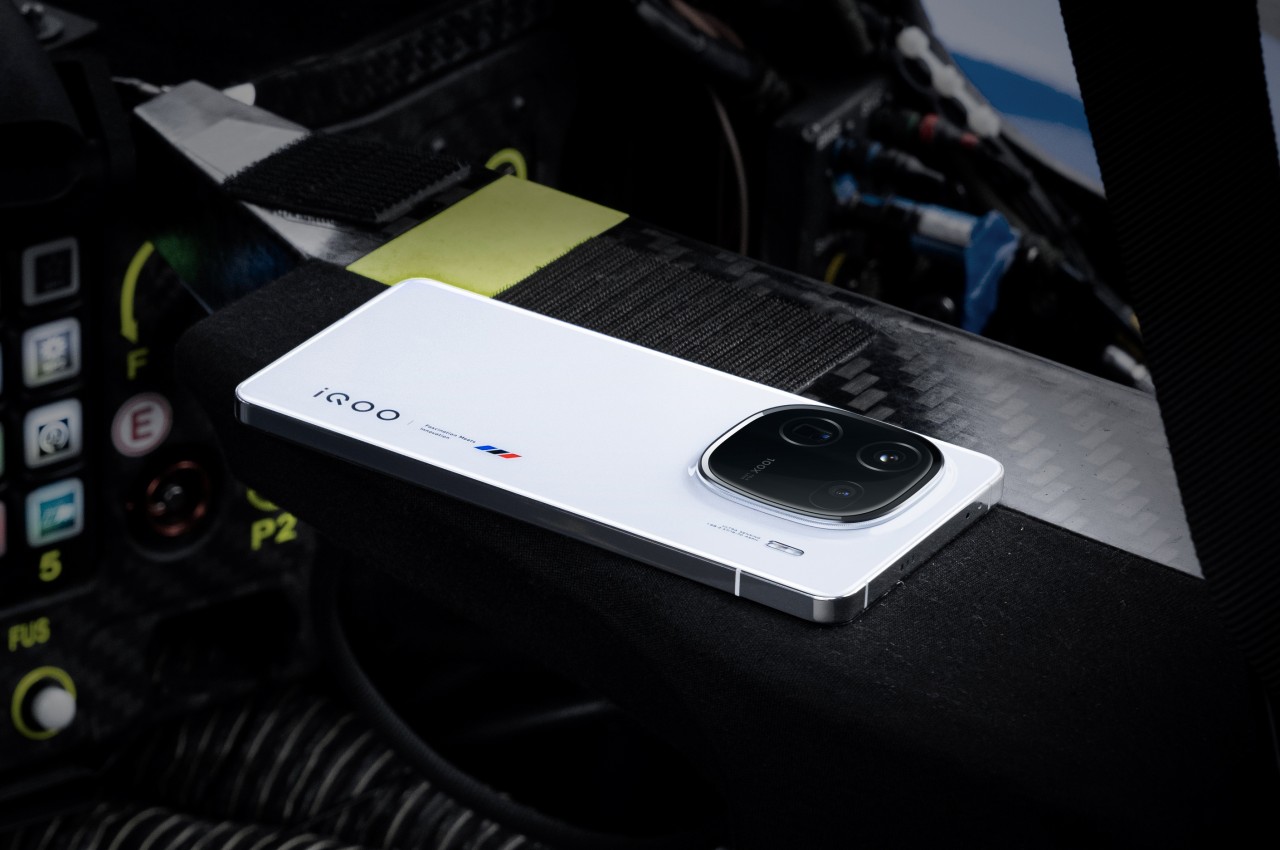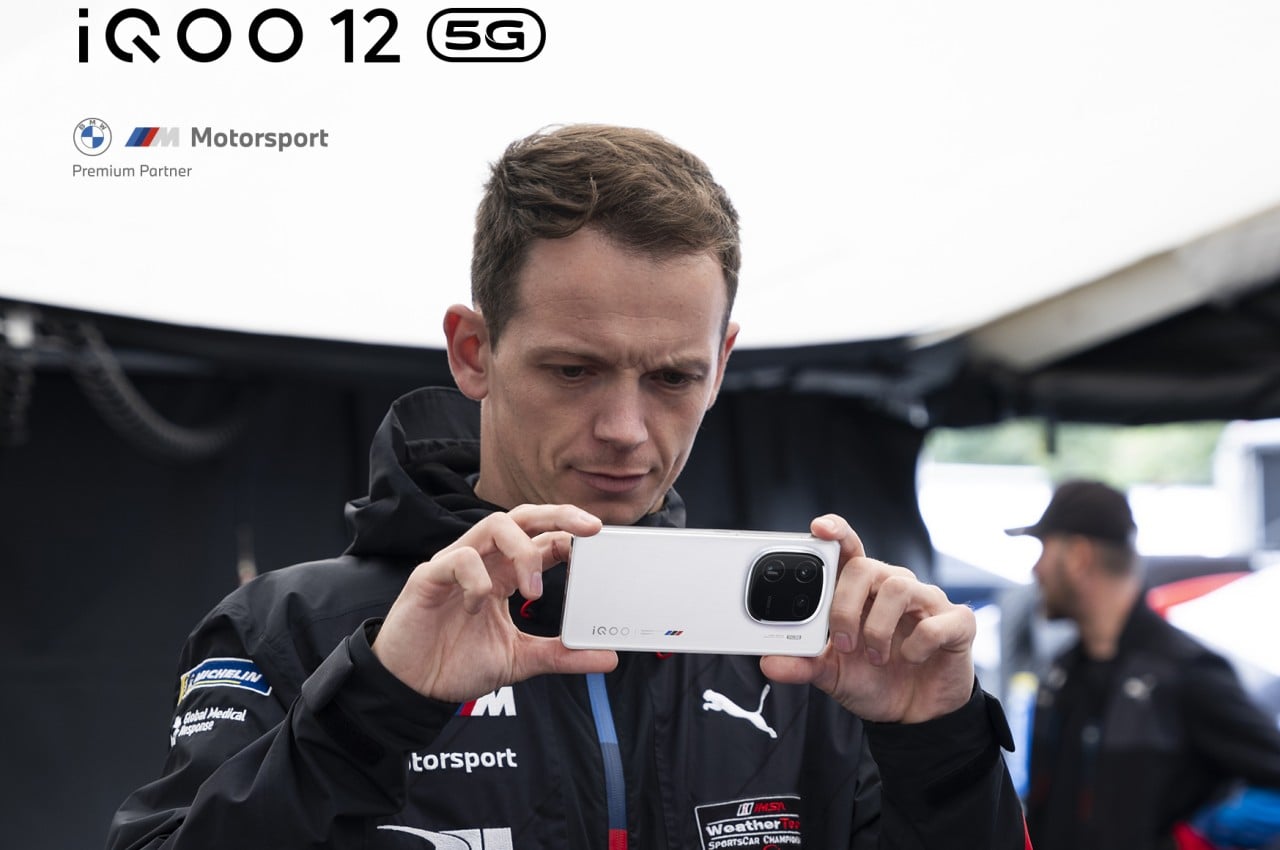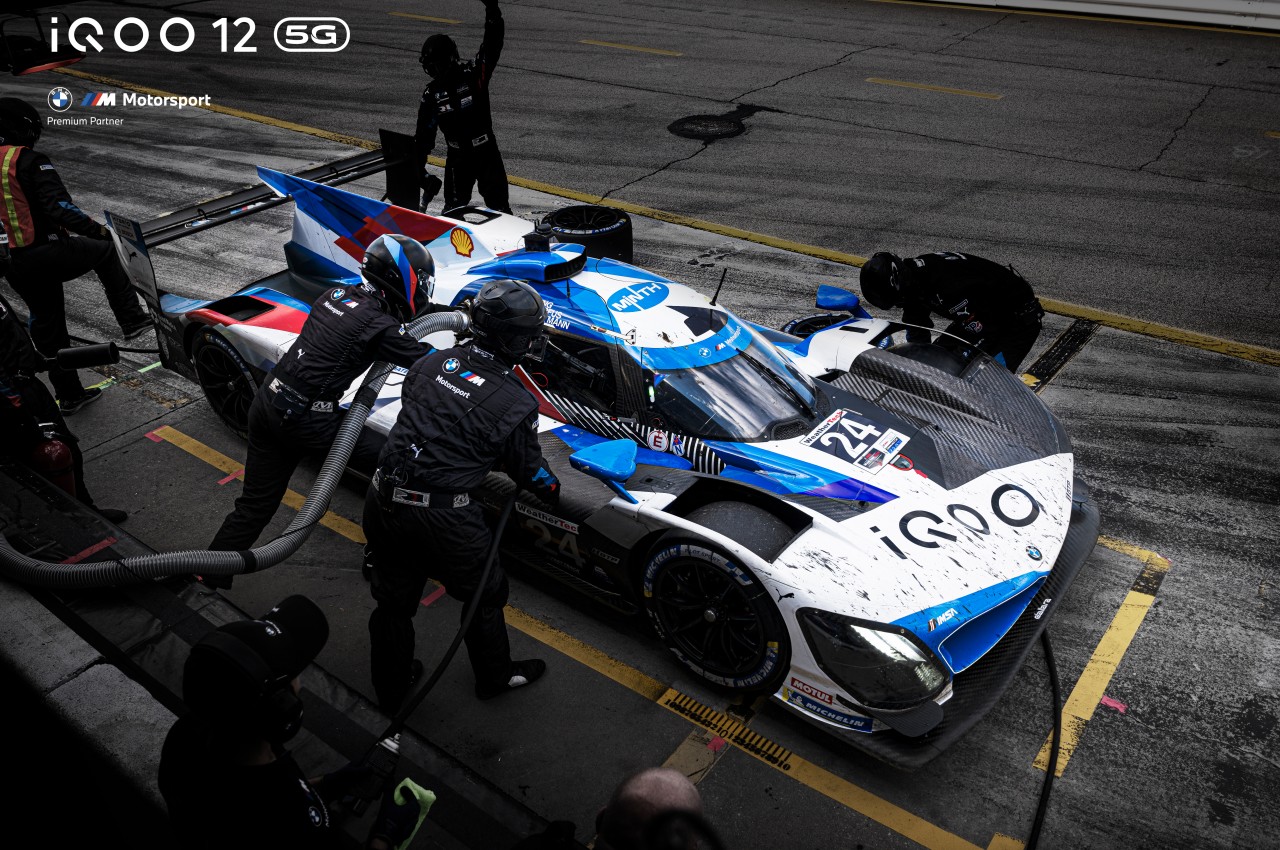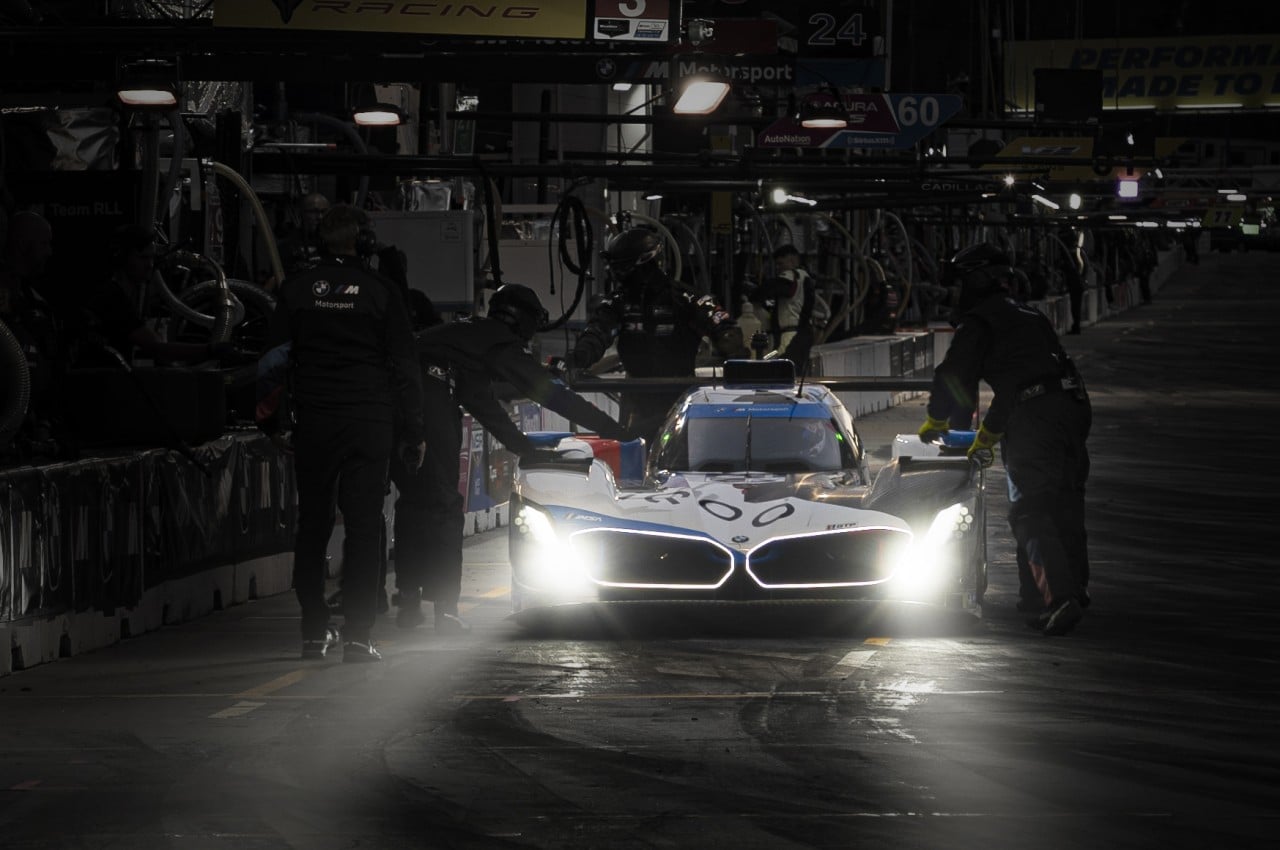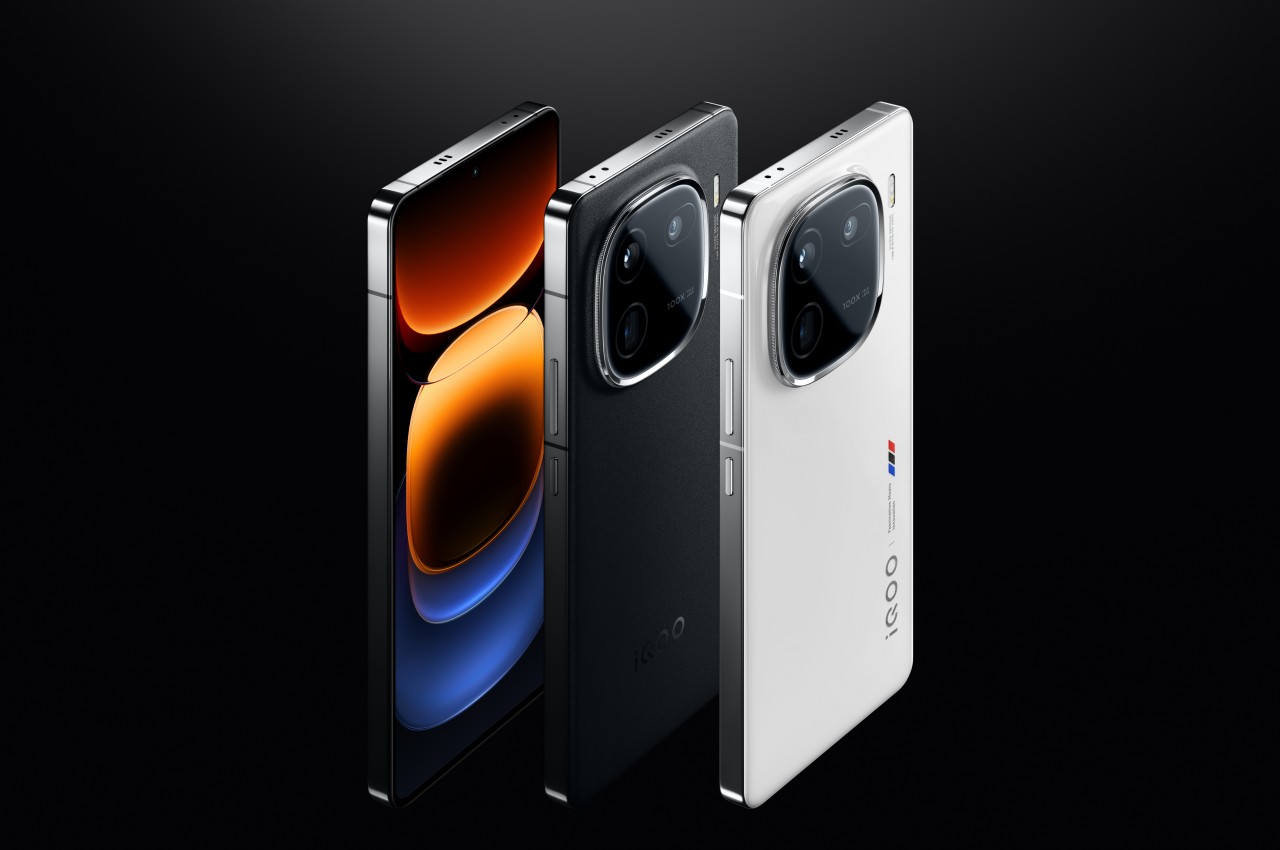
PROS:
- Simple, Elegant, Lightweight Design
- Crisp, comfortable, and fast color E Ink display
- Perfect size for comics, magazines, and A5 documents
- Google Play Store pre-installed
CONS:
- Quite pricey
- Reduced battery capacity
- No keyboard folio like the Tab Ultra C
RATINGS:
SUSTAINABILITY / REPAIRABILITY
EDITOR'S QUOTE:
With a crips color E Ink display and a more affordable price tag, the BOOX Note Air3 C delivers the essential modern e-reader experience without unnecessary cruft.
The current generation of e-book readers has torn down the walls separating it from typical Android tablets. In fact, except for the display and customized home screen, these devices are pretty much Android tablets using E Ink panels instead of LCDs or OLEDs. While this empowers e-readers to be able to do more things, there’s also the risk of going overboard with features that may burden the user, both literally as well as figuratively. Fortunately, there’s quite a wide range of options for those who want different things from an e-reader, ranging from the most basic to the most powerful, but that also makes it harder to choose the right one for your needs. The new Onyx BOOX Note Air3 C promises the middle ground between these two extremes, so we give it a good test to see if it really offers a new experience or is just a rehash of a recent product.
Designer: BOOX
Aesthetics
Although BOOX is probably better known for blurring the lines between e-readers and tablets, it can also be credited with changing the face of e-readers for the better. While these devices started out as simple yet uninspiring small slabs of plastic, the current generation can stand with their heads held up high, proudly displaying their more elegant designs. The BOOX Note Air3 C carries this tradition with a minimalist yet elegant appearance that attempts to resemble the appearance of a thin book. In addition to the wide bezels surrounding the display, the left side has a very wide margin similar to the spine of a book. Of course, you can flip the e-reader around if you prefer that margin to be on the right side, and the UI will rotate as well.
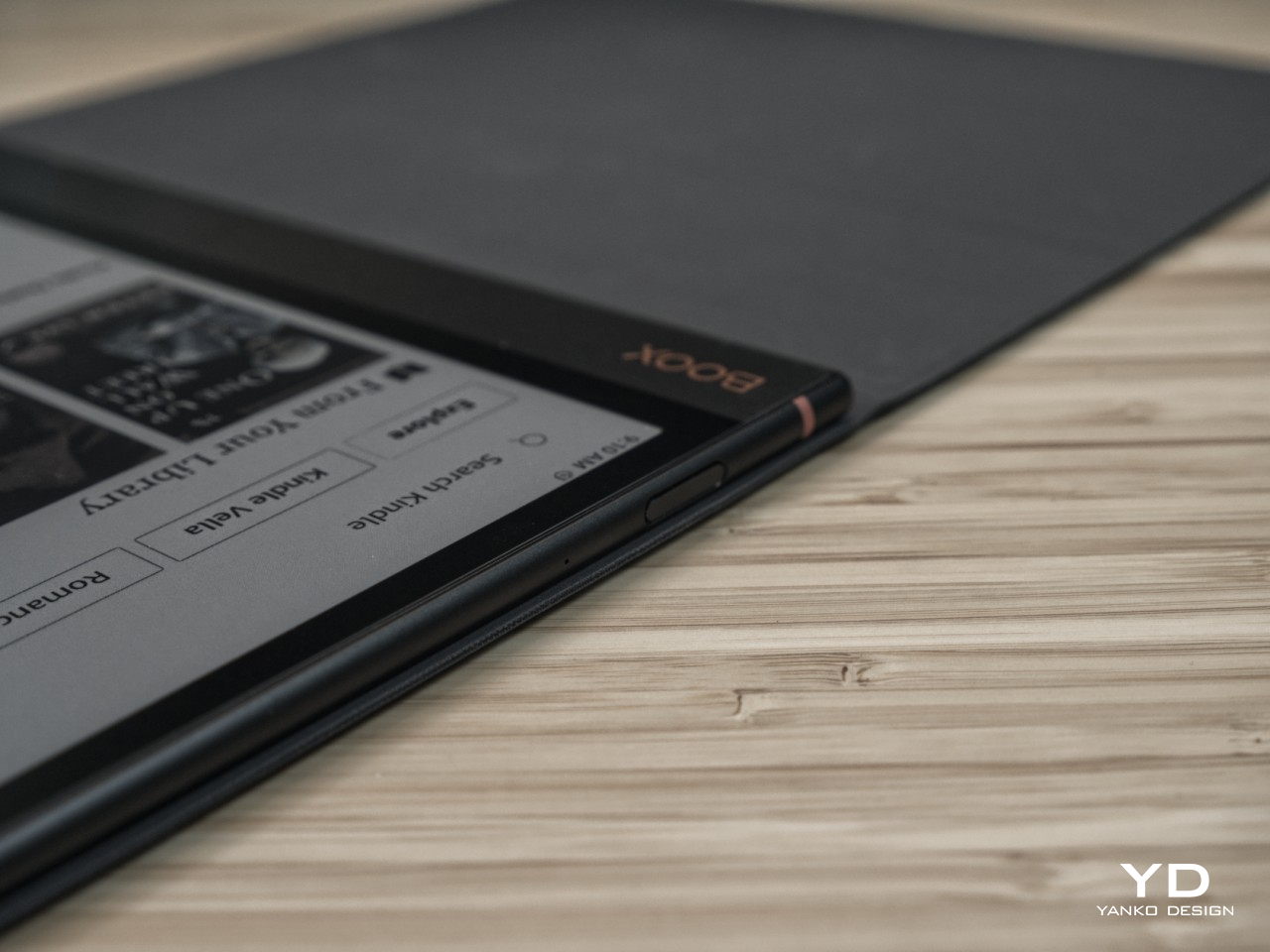
The overall design of the BOOX Note Air3 C is mostly flat, from the front to the back to the edges. It’s the trend in tablets these days, so it gives the device a more modern appearance compared to the curved backs of typical e-readers. It’s arguable whether this design is more ergonomic, as we’ll see later, but there will be little debate that it looks premium. It also feels premium, with a light yet solid aluminum chassis that is sure to stand the test of time and your bag. There are very few markings on the device, most of them on the “margin” side and its edge. There isn’t much visual noise that will distract you from what matters the most: reading on the screen.
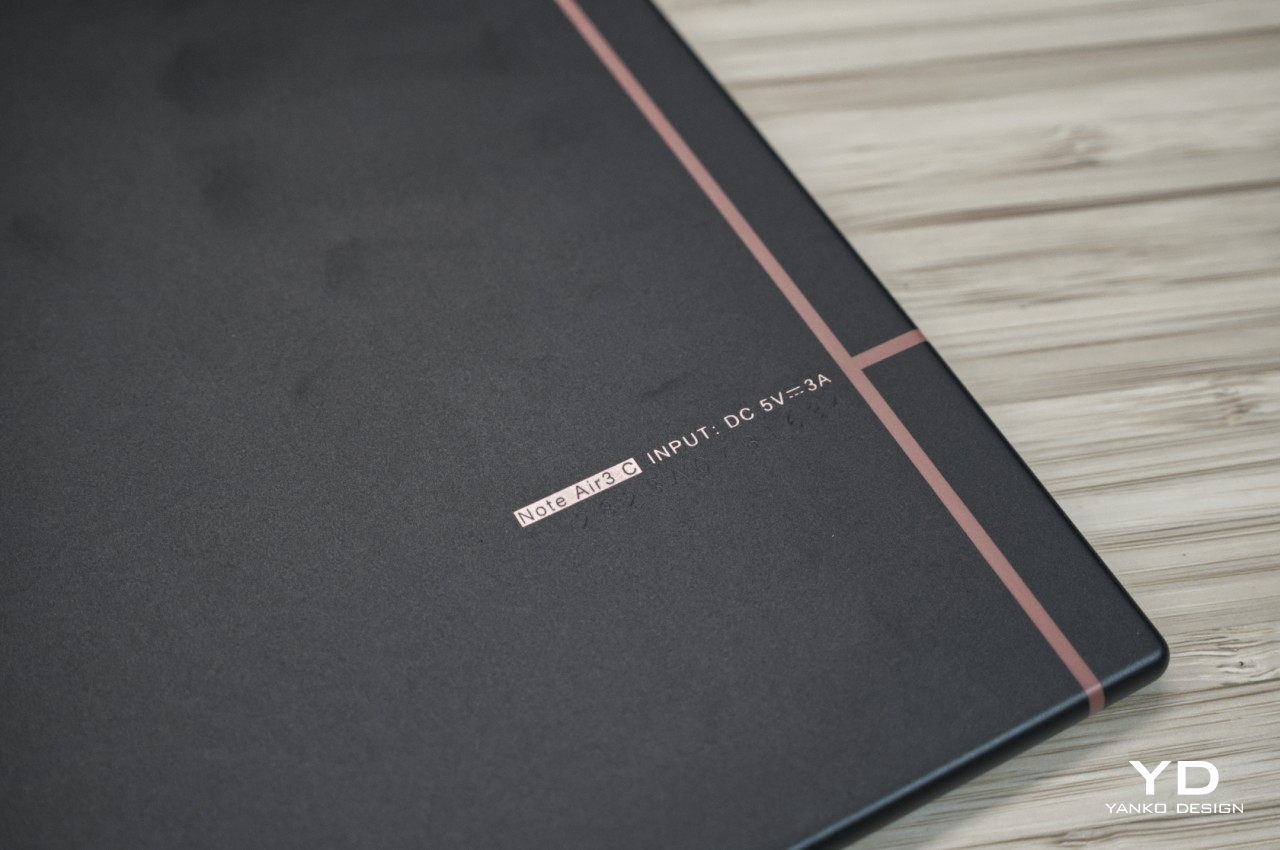
That 10.3-inch screen size is admittedly still a novelty among e-readers, most of which are designed to easily slip inside small bags or hold comfortably in bed above your head. It is, however, also the perfect size for viewing most reading material, including comics, manga, and magazines. Some papers, particularly those in A4 size, will look a bit compressed, but the crisp and sharp Kaleido 3 E Ink panel still makes such content comfortable to read. Of course, it’s a color E Ink panel, which looks fantastic on the matte screen. Of course, colors are limited and muted compared to regular tablets, but we’re talking about eye-friendlier e-paper displays here anyway.
All in all, the BOOX Note Air3 C presents a minimalist design that really contains the basics for an e-reader. There isn’t even a camera, a.k.a. document scanner, unlike its BOOX Tab Ultra C look-alike. Save for the minimum branding accents, it has very few distractions in terms of appearance and even controls, allowing you to be fully immersed in what you’re reading instead.
Ergonomics
The Onyx BOOX Note Air3 C is by no means a small device, especially when compared to common e-readers like the Amazon Kindle. While that does mean it has more screen space for comfortable reading, it also means it’s larger and heavier than your typical e-book readers. That, in turn, has implications on how comfortable it is to use, especially for long periods of time.
With a weight of 430g and a size of 226 x 193 x 5.8 mm, it is almost comparable to a 5th-gen iPad Air (2022) but also considerably lighter. That still means it’s going to tire out your arms when you hold it up too long and it will hurt a lot when you accidentally drop it on your face while lying in bed. There’s still an ongoing debate on whether flat edges are more ergonomic because they don’t easily slip from your hand or if curved is the way to go because it’s kinder to your skin.
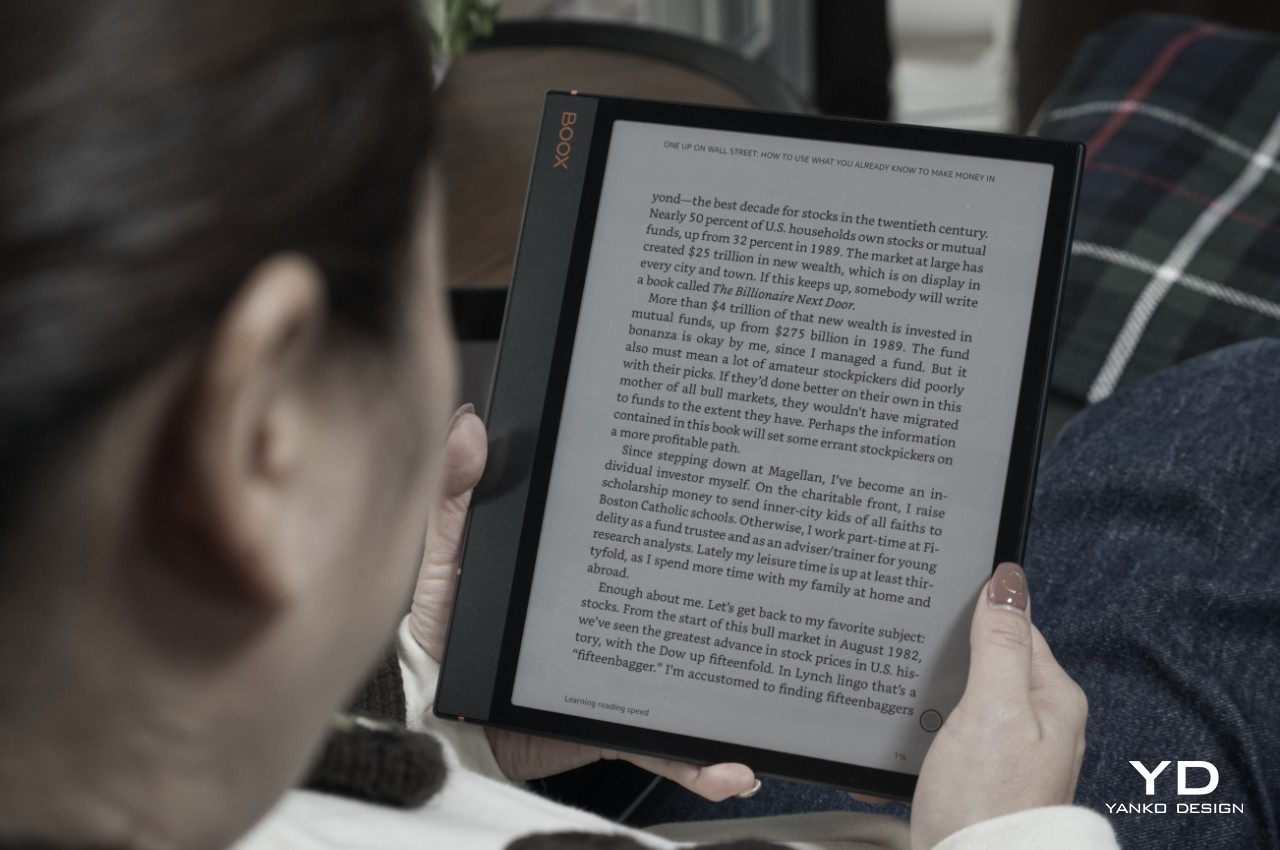
Where the BOOX Note Air3 C really shines is in the comfort it brings to your eyes thanks to E Ink technology. Unlike typical LCD or OLED screens, it doesn’t shine light directly toward your eyes and uses front lighting instead. It is gentler on the eyes and solves most of the blue light problems that screens have (if you don’t turn on the front light), so it’s definitely a significantly better option for those who love reading all the time. Like most of BOOX’s devices, you also get to select the level of brightness and the warmth of the light that you’re comfortable with, allowing you to fine-tune the reading experience to your personal tastes.
Performance
Similar to the latest generations of BOOX devices, the BOOX Note Air3 C is really an Android tablet at heart, both in hardware and in software. It’s powered by a 2.4GHz octa-core processor, most likely a Qualcomm Snapdragon 600 series, with 4GB of RAM and 64GB of storage. The screen is a 10.3-inch E Ink Kaleido 3 panel with a 300 ppi pixel density for black and white content and 150 ppi for colors, pretty much the gold standard for now. It has a Wacom digitizer layer for input with a stylus, which we’ll get to later. Rounding up the specs is a microSD card slot, built-in speakers and mic, Wi-Fi and Bluetooth connectivity, and a fingerprint scanner on the power button.

If most of these sound familiar, you might have already seen or even bought the Onyx BOOX Tab Ultra C. They’re almost identical, save for the smaller 3,700 mAh battery and the lack of a camera that serves as a document scanner. The latter is honestly something that felt quite superfluous on the BOOX Tab Ultra, so it’s a bit encouraging that an unnecessary feature was removed to help cut down on costs. Cutting the battery capacity in half, however, is a bit too drastic, even if it results in a lighter build. Battery life is still a lot better than regular tables, running for days rather than just hours, but it won’t last more than 2 or 3 days of constant use, especially when running a lot of apps.
Those apps will mostly come from the Google Play Store, thanks to being a certified Android 12 device. That means you have access to the same library of apps available to tablet owners, whether or not they make sense to use on an E Ink screen. Performance won’t be the same of course, especially for apps with fast-changing content like games and videos, but you can run them at least. It also means that you won’t be lacking sources for content since you can install the likes of Amazon, Kobo, and more. And yes, you can do your Web browsing, social media, or even work on this device. The built-in speakers are serviceable but not that great, so you’ll want to pair it up with wireless earphones if you really want to enjoy audiobooks or podcasts.
Of course, the real star is the Kaleido 3 E Ink screen, which shows clear, crisp, and sharp text, especially in black and white. Colors are naturally not vibrant and look more like pastels, but that’s on par with current technology. The screen is quite responsive and fast, thanks to the BOOX Super Refresh technology, and it is really at the top of its class. The BOOX Note Air3 C offers the usual four speed modes where you get to trade quality for quick refreshes. Thankfully, the custom user interface lets you choose the mode on a per-app basis rather than just as a global switch.
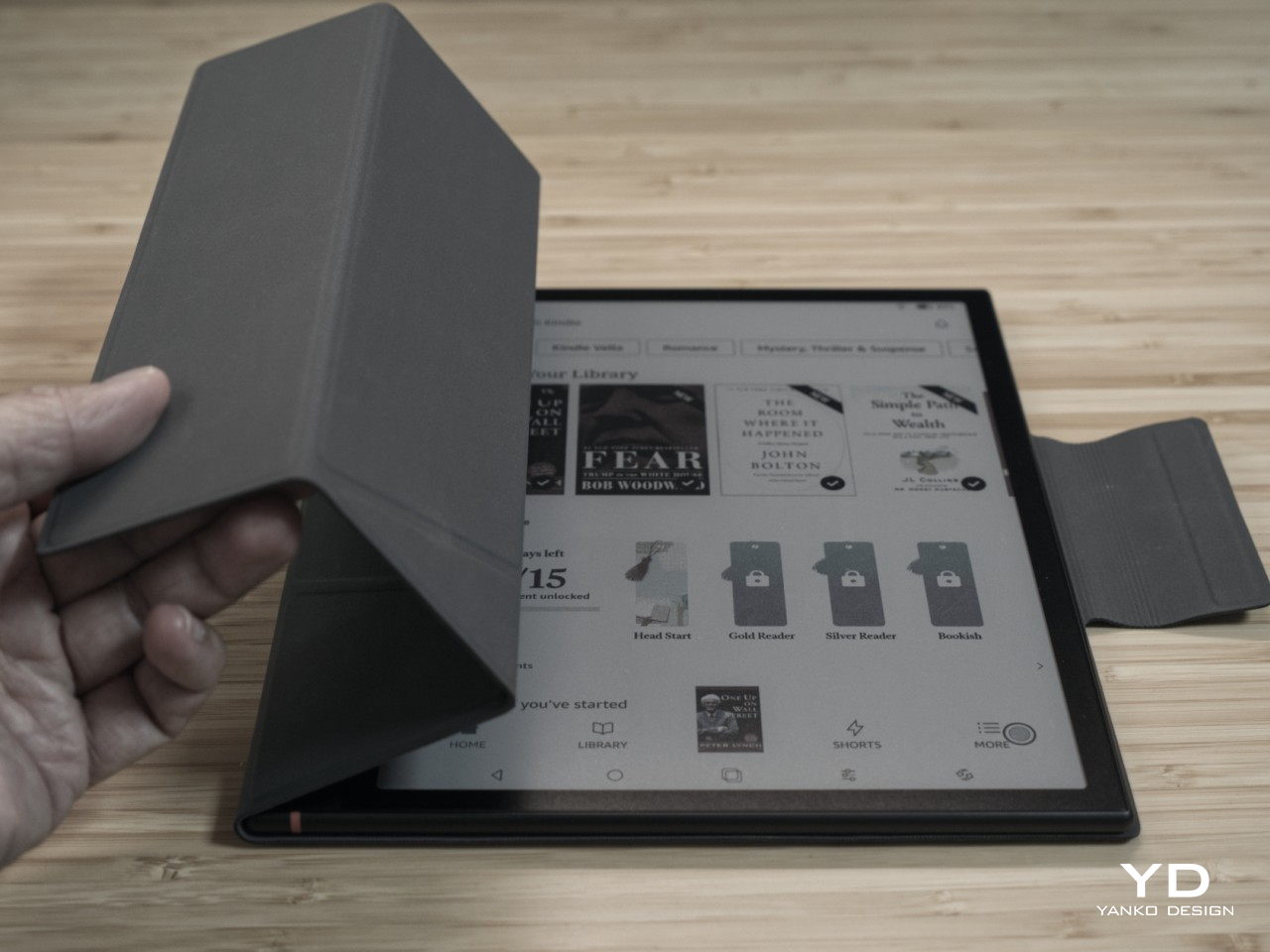
The BOOX Note Air3 C ships with the Pen 2, the version of BOOX’s Wacom-compatible stylus that doesn’t come with a dedicated eraser on the opposite end. Thanks to using a standard technology, however, you can use different kinds of Wacom styluses if the free one isn’t your cup of tea. On built-in apps as well as a few chosen ones like OneNote, the stylus is smooth, fluid, and accurate. Unfortunately, any other app outside those will reveal the lag that is more a limitation of the slow E Ink screen rather than a flaw in Wacom technology. Hopefully, BOOX will open up its pen optimizations to all apps soon.
Another big difference from the BOOX Tab Ultra C is a lack of pogo pins for connecting a keyboard folio cover. In fact, BOOX doesn’t have such an accessory for this model, which means people who want to type will have to make do with a Bluetooth or USB-C keyboard instead. It’s not a huge deal-breaker per se, but it does change the narrative a bit. While the BOOX Tab Ultra C seems almost geared for productivity, including typing documents, the BOOX Note Air3 C goes back to the roots of enjoyable reading, just with a few productive apps on the side.
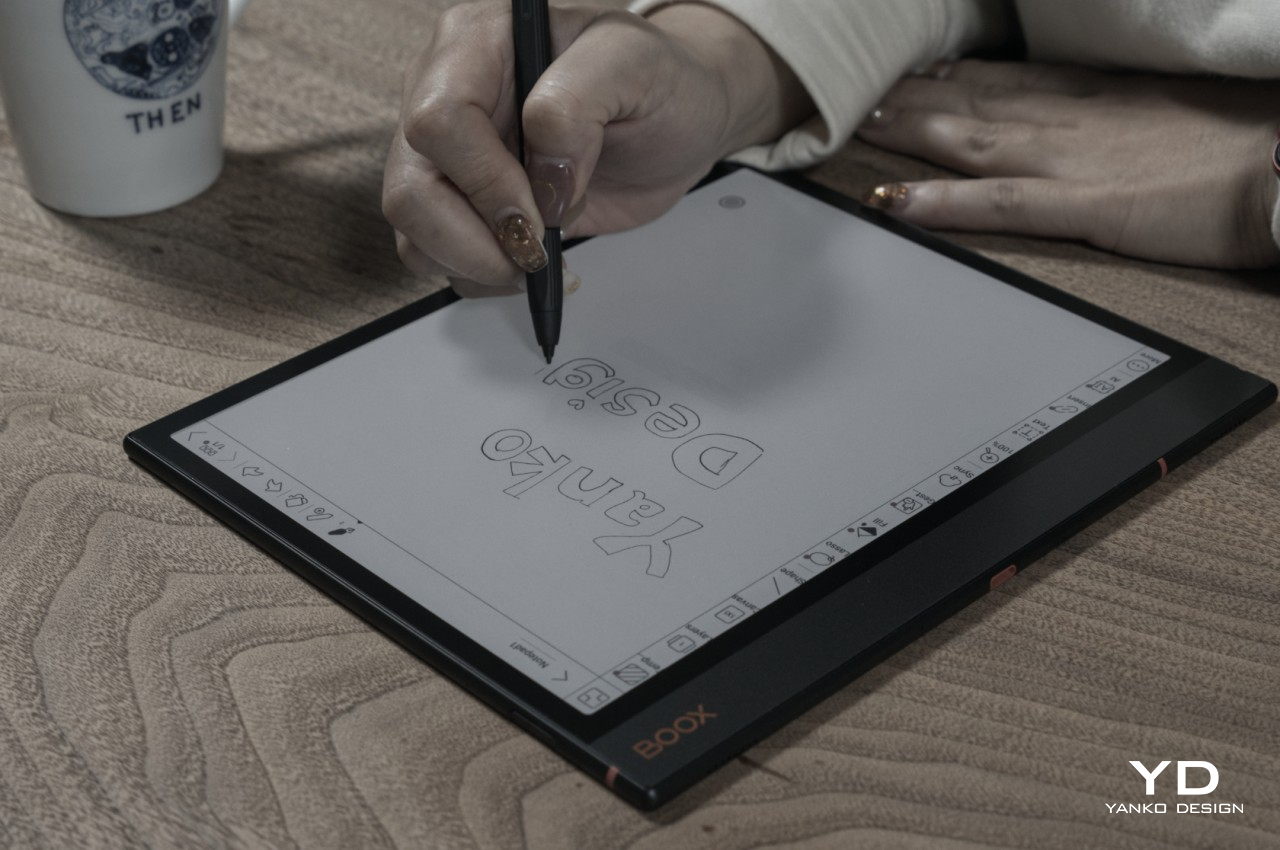
On the one hand, the feature set of the BOOX Note Air3 C doesn’t sound so sensational, especially compared to the discontinued BOOX Tab Ultra C and the new BOOX Tab Ultra C Pro. On the other hand, it actually checks all the right boxes and delivers on its promise without excessive features that few people actually use or even ask for. It performs admirably, with just a few kinks here and there, offering a solid E Ink tablet experience without unnecessary cruft that comes at a literal price.
Sustainability
Onyx hasn’t really scored well in this department and, unfortunately, it is keeping its track record. It’s definitely comforting to see it use more metal and less plastic in its devices, though that seems to only be true for its larger readers. It at least has been quite restrained in its packaging and doesn’t ship with a charger, so material and e-waste are reduced. It still uses plenty of plastic, though, so that knocks off a few marks from its grade.
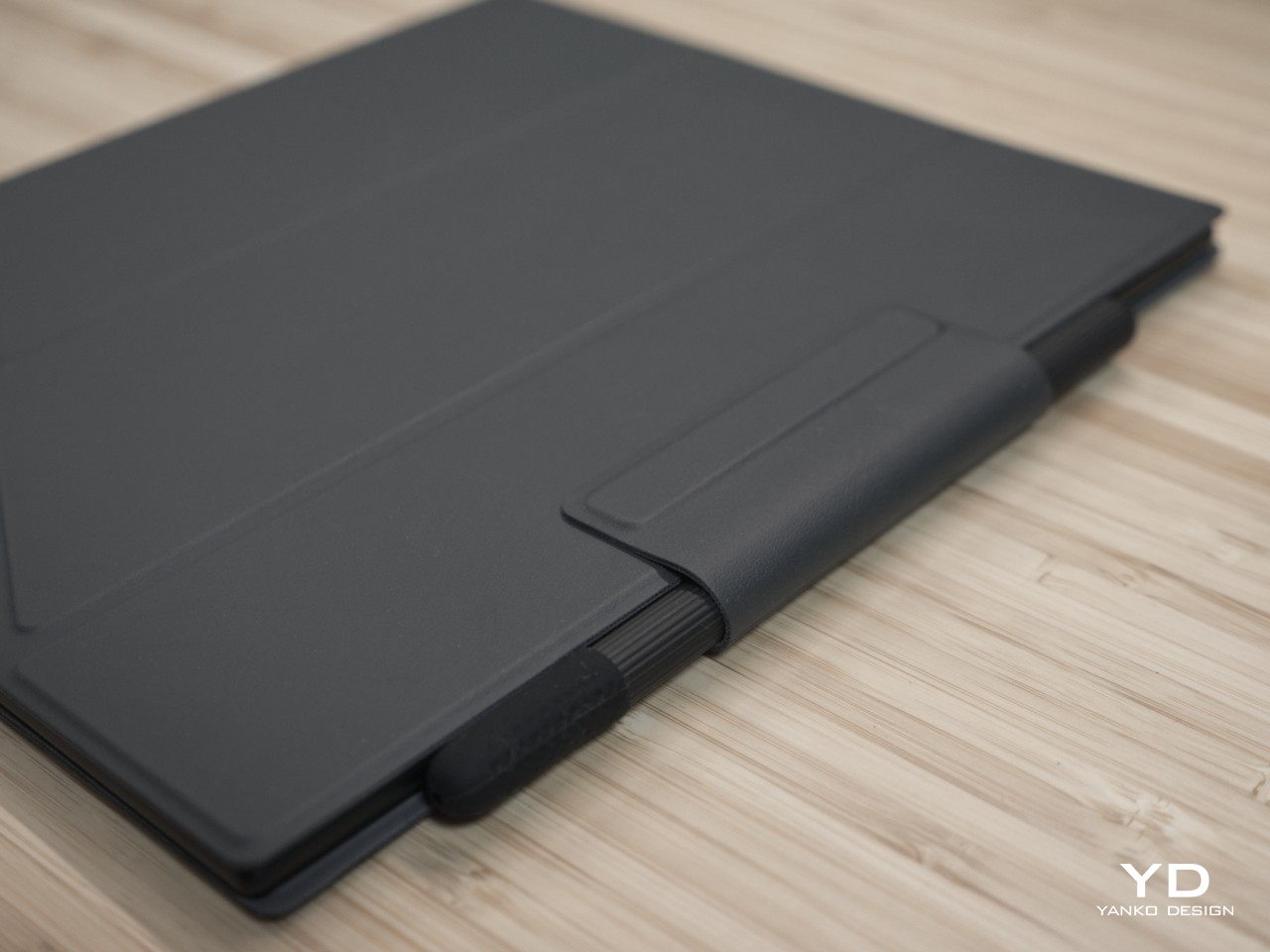
The BOOX Note Air3 C is, fortunately, built to last thanks to its durable body and solid build quality. There’s no formal dust or water resistance, of course, but that’s also not surprising for this line of devices. When accidents do happen, repairs are going to be quite difficult considering there won’t be many shops offering services. You’ll have to gamble on sending the unit back to Onyx or the few authorized service providers they have around the world.
Value
At $499.99, the BOOX Note Air3 C is hardly inexpensive as an e-reader or even as an Android tablet. That price does include the BOOX Pen 2 and a folio cover, so you do save a bit in the long run. It’s still not something you’ll be buying on a whim and will definitely require some decision-making. How many of the things you read are magazines, comics, manga, or other kinds of content that are easier to read on a larger screen? How many of those would require color to really enjoy? And why would you choose it instead of Onyx’s other e-readers that come in a variety of sizes and prices?
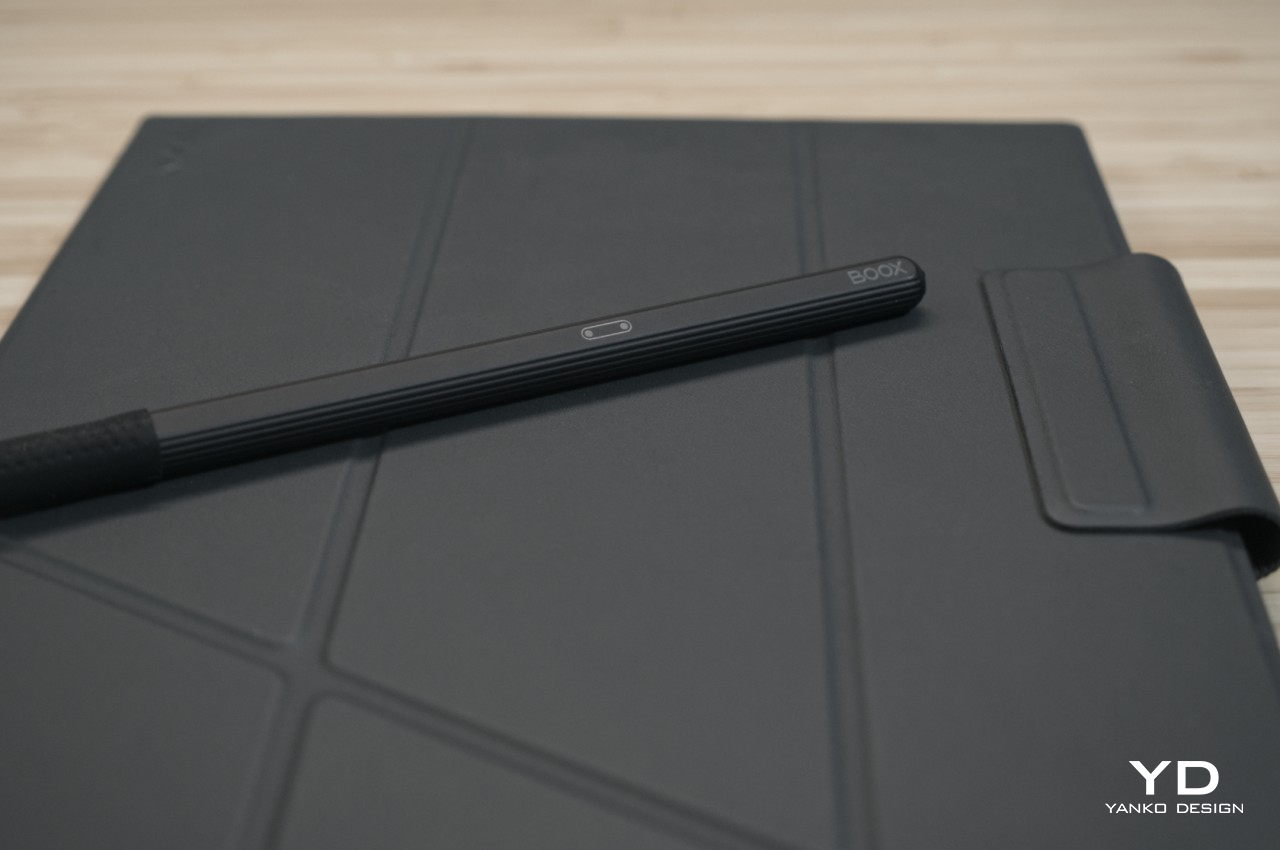
It all boils down to having the right ratio of features and price, bringing the core features you need for an E Ink device, including a few hues of color, without bumping the cost up too much. The BOOX Tab Mini C might be good for reading anywhere, anytime, but it might be too small for some types of content. The new BOOX Tab Ultra C Pro, on the other hand, has all the bells and whistles, practically replacing the BOOX Tab Ultra C, but has a significantly higher asking price as well.
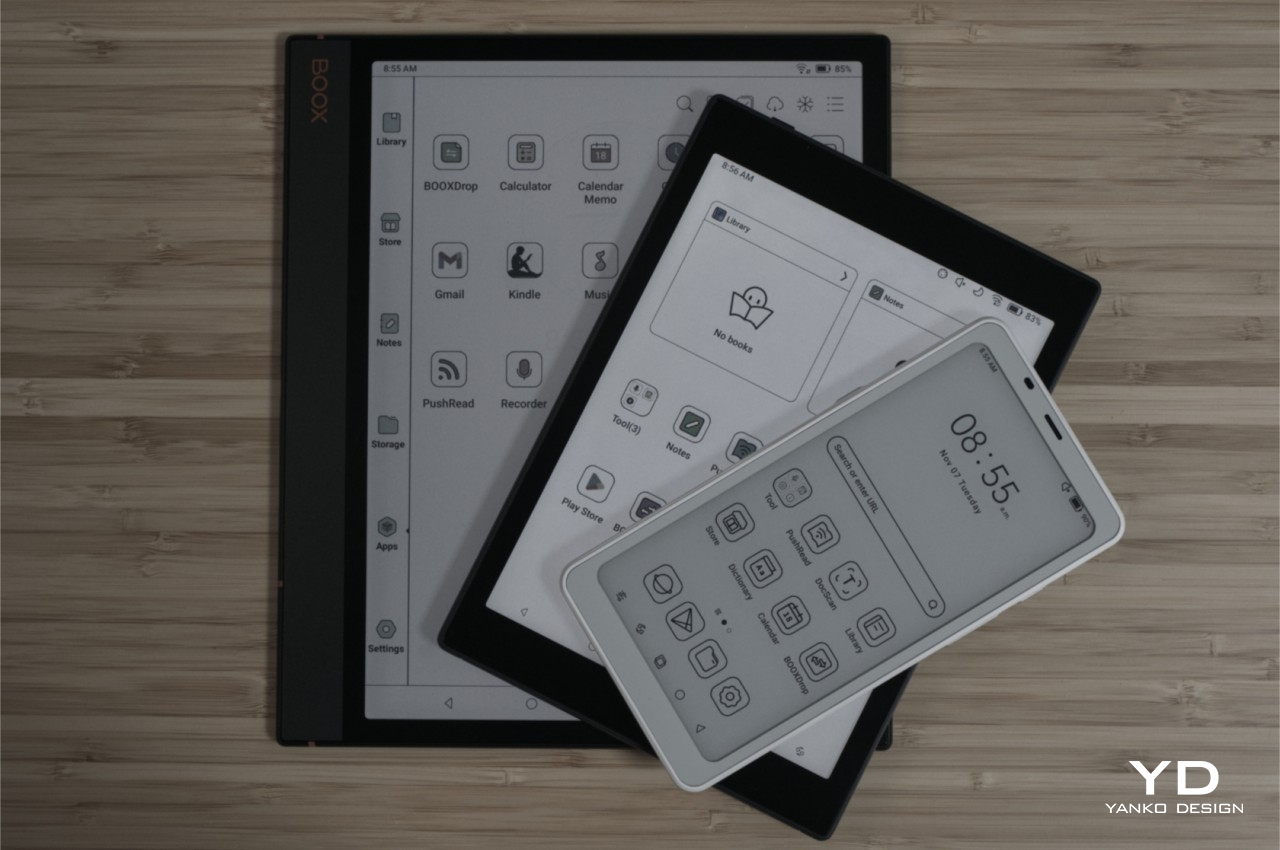
Verdict
Where there were once just three or so e-book readers in the market, we now have a wide variety of brands and models to choose from. While that’s great for the market and users, it can also make things a bit more complicated when choosing to buy one. Onyx itself has quite a selection, and its newest lineup expands the roster even further. With the discontinued BOOX Tab Ultra C, the new BOOX Tab Ultra C Pro, and the smaller BOOX Tab Mini C, you will definitely wonder what the new BOOX Note Air3 C can offer to make a difference. The answer: a solid E Ink experience with a reasonable price tag.
The BOOX Note Air3 C doesn’t simply heap on features just for the sake of having them there. It carefully distills the experience down to the basics but delivers it in a way that’s almost perfect. You get a well-performing Android tablet with a fast and sharp color E Ink screen wrapped in a subdued but elegant design. Yes, it could use a bit more battery, though that would have also made the device heavier as well, and yes, the price tag is a bit hard to swallow. But if you’re looking for a long-term investment in an e-reader that’s going to last you for years, then the BOOX Note Air3 C is definitely something you should consider adding to your cart.

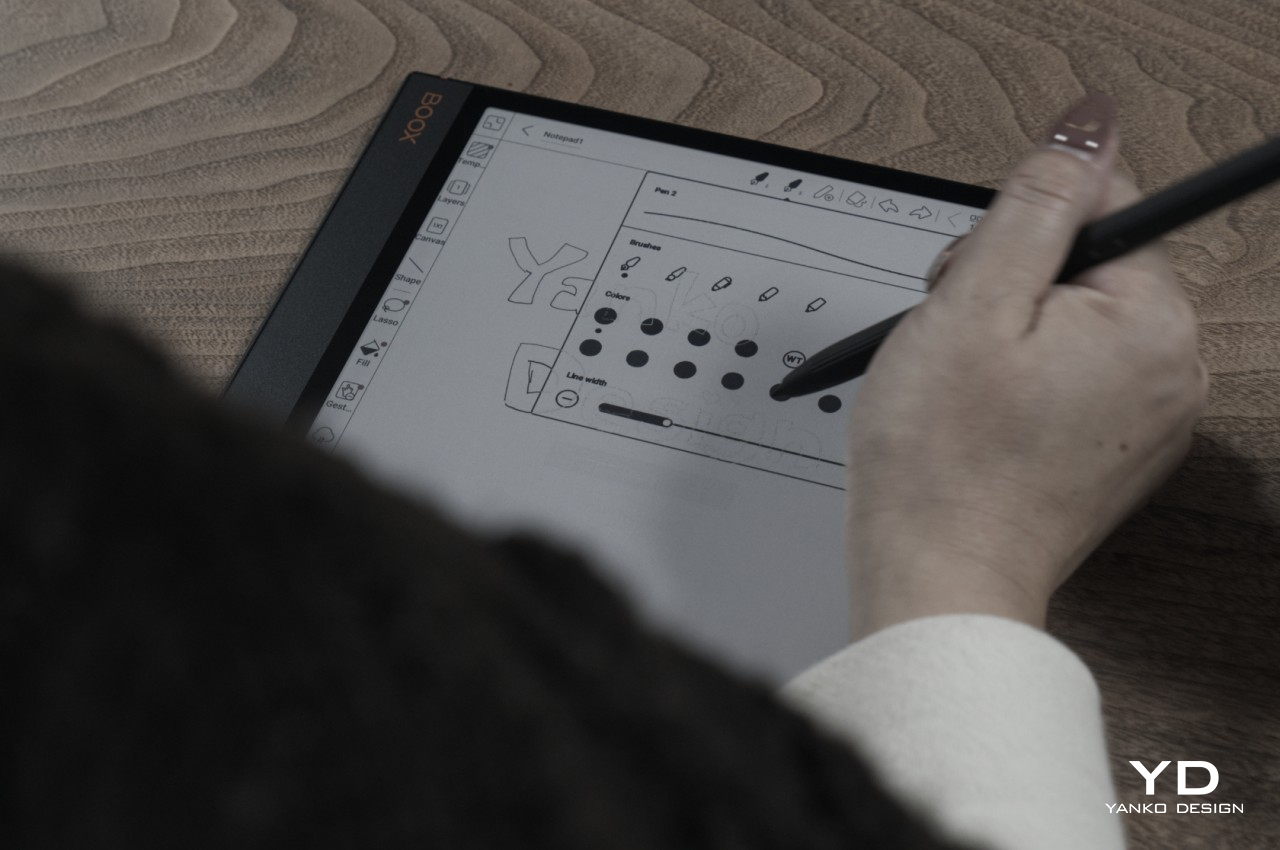
The post Onyx BOOX Note Air3 C E-Reader Review: Solid Basics first appeared on Yanko Design.

